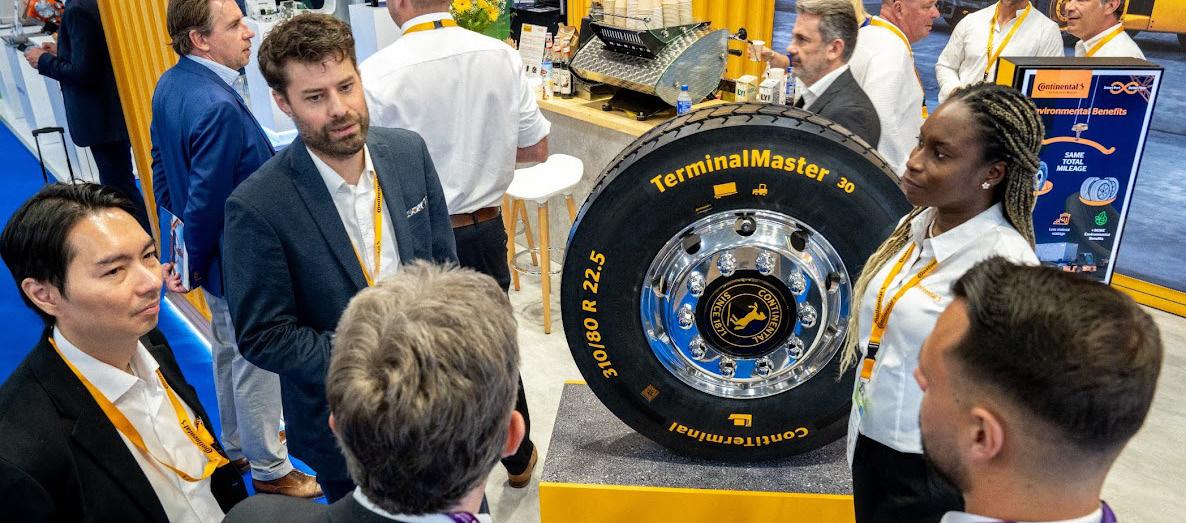PORt GeAR
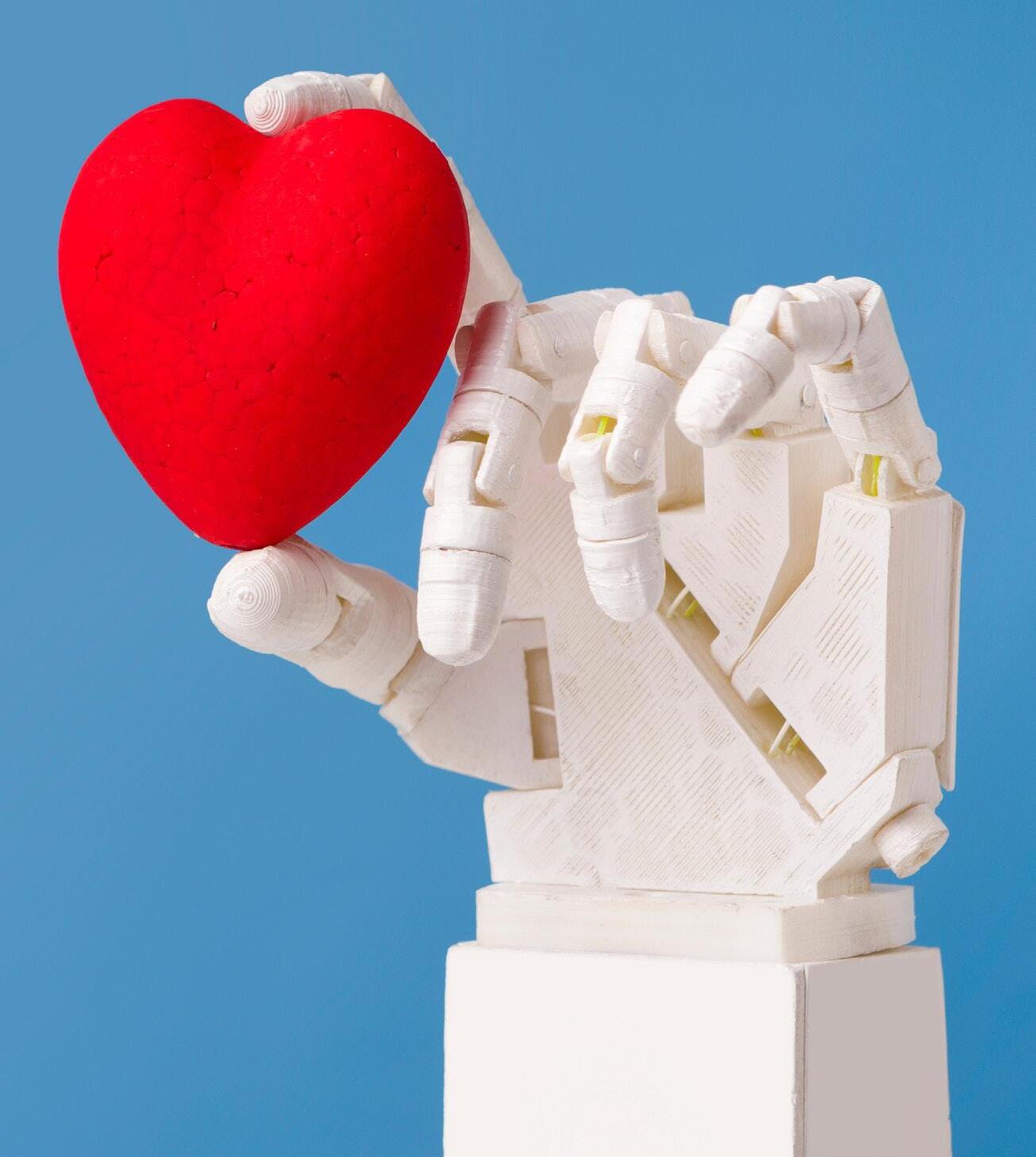




The Port of HaminaKotka is a multipurpose seaport serving trade and industry. This major Finnish port is an important hub in Europe and in the Baltic Sea region.
Welcome to the Port of HaminaKotka!

8 GEFO opts for sails from Norsepower
Deltamarin to further design Finnlines’ Hansa Superstars
9 Scandlines to hybridise two ferries
Hydrogen OPS put to the test in Gothenburg
10 IDENTEC-Paris 5G reefer co-op
Euroports-Noatun wind-port co-op
11 Kalundborg electrifies
Viking Line presents Viking Helios
Aurora Botnia ’s battery pack to get bigger
12 Green Lane by Finnlines
Vectrix by… ELME Spreader!
Esbjerg breaks ground for CCS
13 Oxelösund’s new berth
Klaipėda starts electrifying its quays
Gothenburg invests in a transformer station
Aalborg one step closer to becoming a CO2 hub
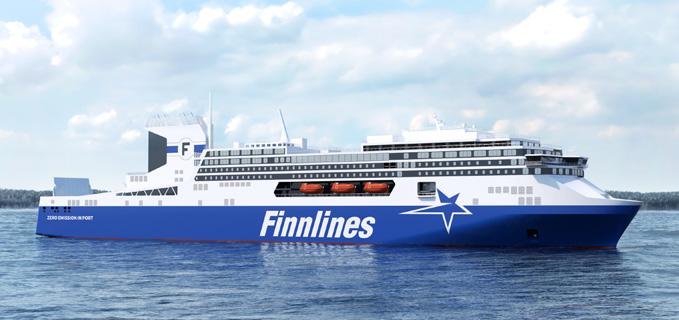
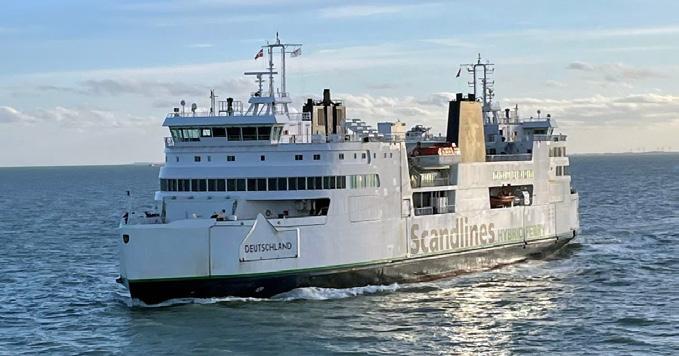
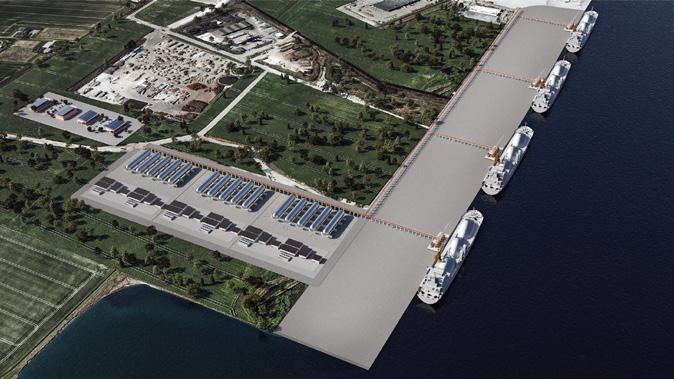
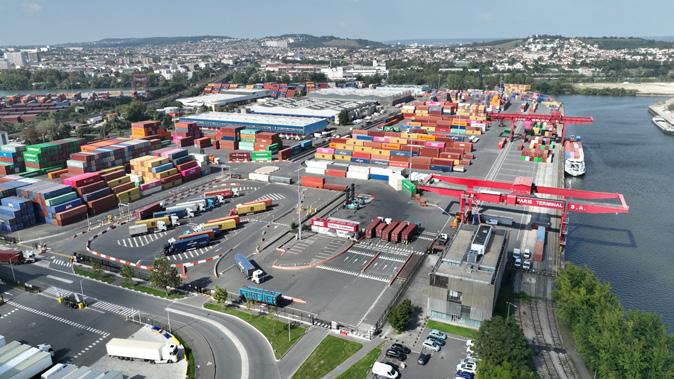


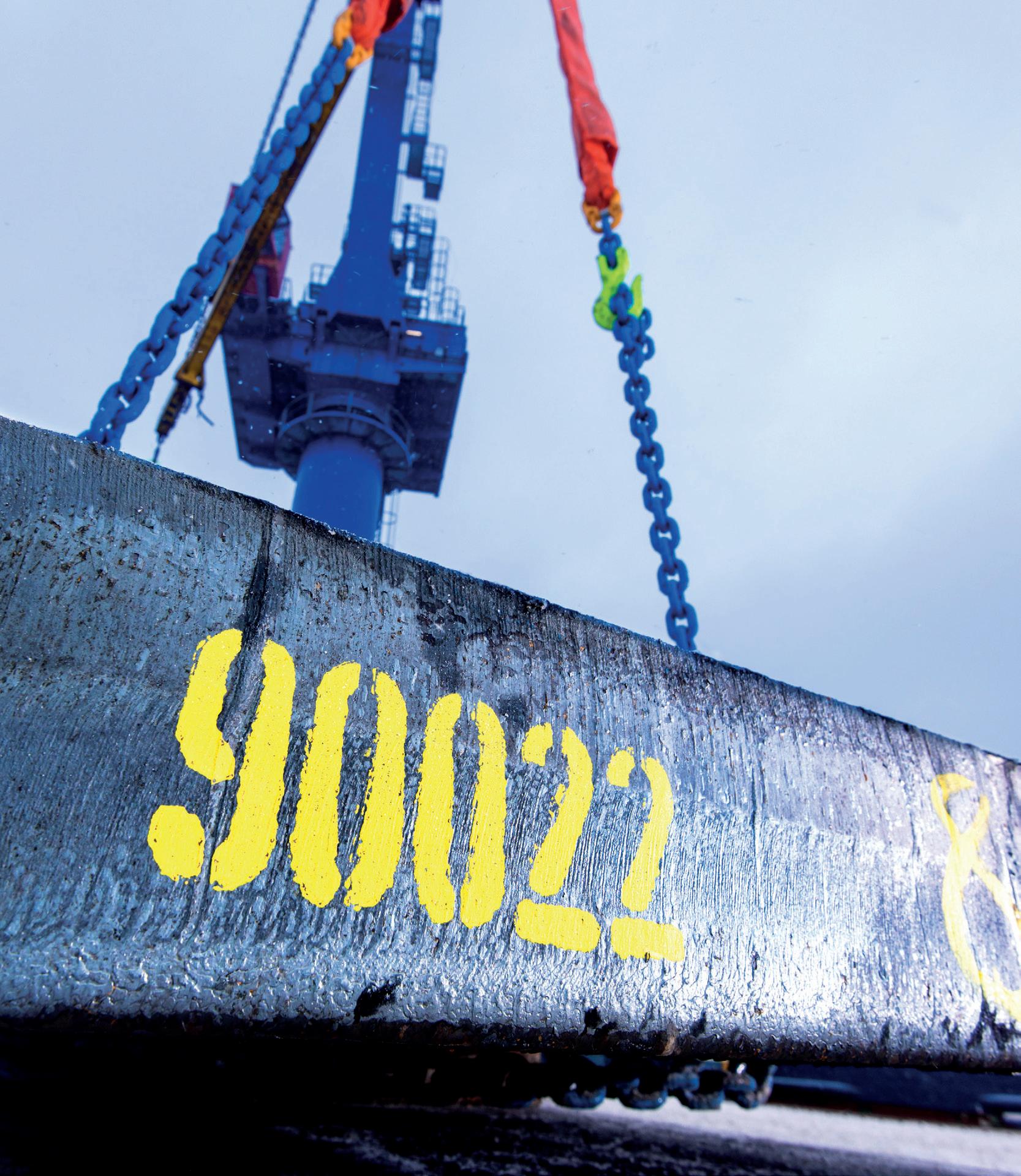
The role of ports is changing. And at the Port of Oxelösund, we aim to be first in line. Today, we talk about ports as transport nodes but also future energy nodes. It’s a role that suits us well. We have a well-developed collaboration with many different industries regarding sustainable energy. One example is our contribution to the transition to Swedish fossil-free steel production. Our investment in a natural gas terminal in the port is a prerequisite for its success, but through that investment, we will also be able to deliver sustainable energy to both shipping and other industries.
The Port of Oxelösund is more than a port. We are a business partner who solves your logistical challenges and helps optimize your goods’ journey, from start to finish. Our goal is to be the Baltic’s leading port terminal, with Europe’s best stevedoring services.

18 THINK AGAIN!
– Interview with Thomas Kumm, Global Technology Manager, ABB Marine & Ports
PRZEMYSŁAW MYSZKA & PRZEMYSŁAW OPŁOCKI
20 THE RIGHT INGREDIENTS FOR SUCCESS
– Interview with Thomas J. Rucker, President, Tideworks Technology
PRZEMYSŁAW MYSZKA & PRZEMYSŁAW OPŁOCKI
23 STRONG NETWORK ANCHORS
– Three strategies for maritime ports to overcome modernization challenges and enhance global trade
SARAH BANKS, PRASANNA ELLANTI, AND JOHNNY ANDERSON
25 UNLOCKING THE CODE
– Strategies for meeting upcoming decarbonization targets
EIRIK OVRUM
29 MARITIME’S NEXT GREAT REVOLUTION
– How data standardisation will change shipping ARNAUD DIANOUX
31 THE BRIDGE BETWEEN TRADITIONAL AND MODERN
– Using high-frequency data to beat modern shipping’s biggest challenges
CASPER JENSEN
33 GETTING IN GOOD CONDITION
– How a digital strategy can support condition-based safety GURINDER SINGH
35 FORWARD-THINKING HEALTHCARE
– From reactive to predictive handling of seafarer health issues
MARINOS KOKKINIS


40 Norbert Klettner – Managing Director, RBS EMEA
Fredrik Rosén – Business Line Manager – Material Handling, Dafo Vehicle AB
41 Andrea Virone – APAC Sales Manager & Global Ports Manager, Aristoncavi S.p.A.
Julian Galvis – VP of Sales and Marketing, Tideworks Technology
42 Stephan Piworus – Co-Founder and CEO, Zenze
43 Laurent Dupuis – VP Product Management, Cavotec
Stephan Trauth – General Manager, Mi-Jack Europe GmbH
44 Ramana Jampala – CEO, Avlino
45 Elin Amrén – Marketing & Communication Director, sfPORTEQ
Andreas Kyrtatos – CEO, Embotech AG
46 Kira Biernat – Marketing Manager, INFORM GmbH
47 Jaroslaw Warzecha – Director Business Unit Port, VAHLE
48 Gamze Karataş – Sales & BD Manager, GullsEye
Fredrik Rönnqvist – Key Account Manager and Segment Manager: Material Handling, Fogmaker
49 Sjoerd de Jager – Managing Director & Co-Founder, PortXchange
Devon van de Kletersteeg – Product Growth Manager, CM Labs
50 Ricky Hirani – Global Commercial Product Leader, Big Trucks & Port Equipment, Hyster
51 Liebherr Maritime Cranes
52 Steven Olsen – Managing Director, Svendborg Brakes, Regal Rexnord
53 Kalmar
54 Rama Raju – CEO, Envision Enterprise Solutions
Peter Szelei – Senior Director Business Development, FERNRIDE
55 Jon Sojo – Tratos Export Director, Tratos
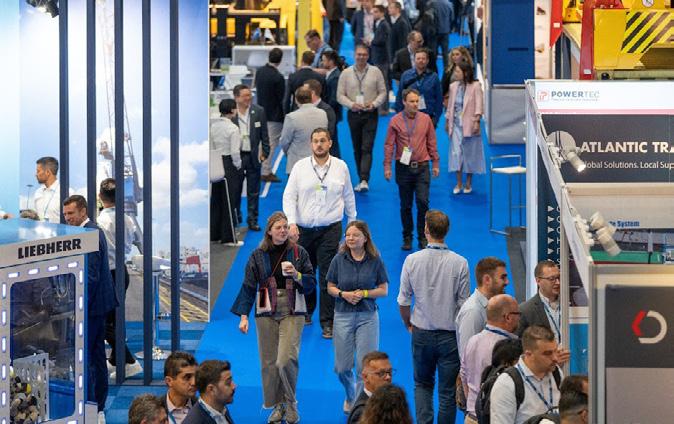


BIMCO, ICS, IMCA, INTERCARGO, INTERTANKO, and OCIMF – further supported by over 40 maritime stakeholders –published the latest version of the Best Management Practices (BMP) for Maritime Security (MS), an interactive online guidance to help all vessels plan voyages and to detect, avoid, deter, delay, and report attacks and incidents wherever they occur. This BMP MS consolidates previously published regional publications into a single, comprehensive source with actionable insights and advice. It focuses on providing a threat and risk management process and, recognising the dynamic nature of regional security situations, provides signposts to direct users to the most up-to-date security intelligence and risk assessment information. Additionally, the publication includes
InterManager, The Nautical Institute, and IMarEST have partnered to gather up-to-date information on the risks faced by workers in enclosed spaces on ships. “Together [we] have launched an industry-wide survey which aims to collate feedback from those working on ships to delve deeper into what’s going wrong and understand better what solutions are needed,” the parties said in a press release. The detailed online survey, which can be completed anonymously, asks seafarers to identify what aspects of enclosed space entry present risks for them and how involved in safety procedures they have been. Captain Kuba Szymański, Secretary General of InterManager, shared, “Since 1998, InterManager has been collating statistics on behalf of the whole shipping industry and sharing them with partners and the
various diagrams that provide valuable learning opportunities; it also details global authorities and lists appropriate contacts & tools for seafarer welfare support. “2024 saw an unprecedented spike in attacks against merchant ships. Ships were attacked with weapons of war in the Black Sea and in the Southern Red Sea more than one hundred times, and four innocent seafarers lost their lives. Globally, 126 seafarers were held hostage during pirate attacks and armed robberies, and 12 seafarers were kidnapped. BMP MS will reduce risks and save lives. While we cannot control how the threats will develop in 2025 and beyond, we can make sure that we have the best tools available to help protect our seafarers and world trade,” commented David Loosley, BIMCO’s Secretary General & CEO.
International Maritime Organization. Sadly, from this information, we can see that workers are still dying in enclosed spaces on board ships despite numerous industry interventions.” The statistics show that most enclosed-space accidents involve senior ranks or stevedores, and the highest percentage of incidents occur on bulk carriers (41%) and tankers (23%). The most frequent locations for life-threatening incidents or deaths are the hold and hold access areas (51%), with cargo oil tanks also presenting a significant risk (18%). Szymański added, “We have been discussing enclosed space safety at the highest levels for many years now and yet, despite the shipping industry producing a wealth of rules, procedures, guidelines, leaflets, etc., people are still dying in these confined spaces on ships. Please have your say on what needs to be done.”
TT Club is warning cargo handling and terminal operators that fire remains a major cause of damage and loss to port and terminal equipment. The insurance specialist’s analysis of a 10-year claims history shows that of the nearly 1,600 firerelated claims it has received over that period, some 19% have involved this equipment. “Fire risk not only poses a significant concern in terms of insured losses and obvious operational disruption, but it also presents a real and significant risk to the safety of the workforce, facility visitors/users, and indeed the general public. As a result, we strongly advise that
fire detection and suppression systems in port equipment are considered by operators as critical safety measures,” cautions Neil Dalus , Risk Assessment Manager at TT Club. As such, his organisation commends the white paper published by the Port Equipment Manufacturing Association titled Fire Detection and Suppression Systems for Mobile Port Equipment. “The paper is comprehensive in its coverage of fire safety measures and particularly emphasises the importance of regular maintenance, collaborative risk assessments, adherence to industry standards, and, of course, mandatory regulations,” highlights TT Club.
The World Shipping Council (WSC) reported that in response to a series of devastating fires caused by improperly handled charcoal, shippers should be ready to see carriers phase in new tighter regulations this year. These will require all charcoal shipments to be declared as dangerous goods under the International Maritime Dangerous Goods Code . There are also new treatment, packing, and stowage requirements for shipments of charcoal. “We are eager to see the new regulations implemented
as the status quo hasn’t been adequate at keeping crew, cargo, and vessels safe,” shared Joe Kramek , WSC’s President and CEO. He furthered, “Treating all charcoal as dangerous goods ensures uniform safety standards and gives everyone involved – from shippers to carriers – the tools and clarity needed to prevent future tragedies.” With the help of the International Group of P&I Clubs and TT Club, WSC created a reference guide to ensure shippers are well-informed about the changes.
Baltic Exchange and Veson Nautical released the revamped standard designed to help owners and charterers share common data requirements to speed up the vetting process when a dry bulk carrier is put up for hire, facilitate faster trades, and ensure smarter pre-fixture decision-making. Importantly, “This latest revision includes several key developments linked to important emissions-related data and enhanced safety requirements to ensure charterers are hiring the right vessel for their needs and expedite the vessel acceptance process,” underscored Janet Sykes , Chief Commercial Officer at Baltic Exchange.

The shipping company from Hamburg will have six of its newbuilds, constructed by Nantong Xiangyu Shipbuilding & Offshore Engineering, fitted with Norsepower Rotor Sails. Each of the four 3,850-deadweight (dwt) chemical tankers will be equipped with one 20-metre-tall and 4.0-m-in-diameter rotor, while the two 7,900 dwt chemical carriers will get the 28-by-4.0 version. All six rotors will feature Norsepower’s EX-compliant design, certified for use on vessels transporting flammable cargoes. GEFO will also have access to the Norsepower Digital Dimension, including the AI-powered Norsepower Sentient Control for real-time performance optimisation, predictive maintenance, and full transparency on emission savings. The sails will be manufactured at Norsepower’s site in China, delivered to the yard already tested, fully assembled, and installation-ready. GEFO’s newbuildings, designed by Ship Design & Consult, are scheduled for commissioning in 2026-28. “At GEFO, we are committed to building a future-ready fleet that meets the highest standards of environmental performance and operational efficiency. Partnering with Norsepower allows us to integrate proven
Merchants Weihai Shipyard has entrusted the Finnish Turkuheadquartered ship designers to prepare the complete basic and detail design of the three ferries, due for delivery in 2028-29. Deltamarin will work on the evolution of the Superstar cruise ferries, plying between Naantali and Kapellskär, adapting Hansa Superstars to the longer crossing between Helsinki and Travemünde. Among others, the newbuilds will feature new cabin categories and provide restaurant options tailored to different passenger preferences, “with a strong focus on the overall onboard experience,” the ship designer underscored in a press brief. Hansa Superstars will also include multi-fuel engines (methanol), optimised hull and propeller designs, shore power connectors, and energy-efficient onboard power management systems for both at-sea and in-port operations, “all contributing to over a 50% reduction in CO2 emissions per transported cargo unit compared to vessels currently operating on the same routes,” Deltamarin highlighted. Each 240-metre cruise ferry will offer 5,100 lane meters of cargo space, capacity for 90 cars, and accommodation for up to 1,100 passengers across 320 cabins. “Together with Deltamarin, we have developed Superstar-class vessels, setting a completely new standard for freight and passenger traffic in the Baltic Sea. With our new
wind propulsion technology into our newbuilds from day one – supporting both our sustainability targets and our long-term competitiveness,” underscored Henning Brauer, GEFO’s Technical Director. Heikki Pöntynen, CEO of Norsepower, added, “This is a landmark agreement for Norsepower, not just because it involves two new customers and six vessels – but because it signals a fundamental shift in how wind propulsion is perceived in commercial shipping. We are no longer talking about one-off pilot installations; we are now securing full fleet commitments. That is a clear sign we have not only opened the market, but we are now leading it – both in terms of proven delivery capacity and customer trust.” He furthered, “And with access to the Norsepower Digital Dimension, including our AI-powered Norsepower Sentient Control and Norsepower Cloud, our customers are fully equipped to maximise the return on their investment from day one.” GEFO has received support for their new chemical tankers from the German Government’s Namkue Fund, a financial instrument aimed at promoting sustainable coastal shipping and accelerating decarbonisation technologies.
investment programme, we are proud to continue this shared journey. Our longstanding and successful partnership with Deltamarin and China Merchants Weihai Shipyard has been instrumental in driving innovation and strengthening efficient maritime transport,” said Juha Ahia, Manager of Newbuilding & Projects at Finnlines. Janne Uotila, Managing Director of Deltamarin, added, “The signed contract marks the continuation of a longstanding partnership between Deltamarin and Weihai Shipyard. Our partnership has continually delivered reliable, efficient, and environmentally conscious vessels that meet the expectations of both the vessel owner and regulators. This order demonstrates the trust our clients place in our ability to design and deliver state-of-the-art ro-pax vessels. With this latest order, the total number of ro-paxes designed by Deltamarin and built by Weihai Shipyard reaches an impressive 22 ships during the last 10 years.” Ou Shubo, Deputy General Manager at Weihai Shipyard, also commented, “The expertise and support Deltamarin provides have always been invaluable, and we look forward to delivering these next-generation vessels to Finnlines, which will play a key role in their sustainable fleet expansion.” Deltamarin completed the concept and contract design for the Hansa Superstars earlier this year.
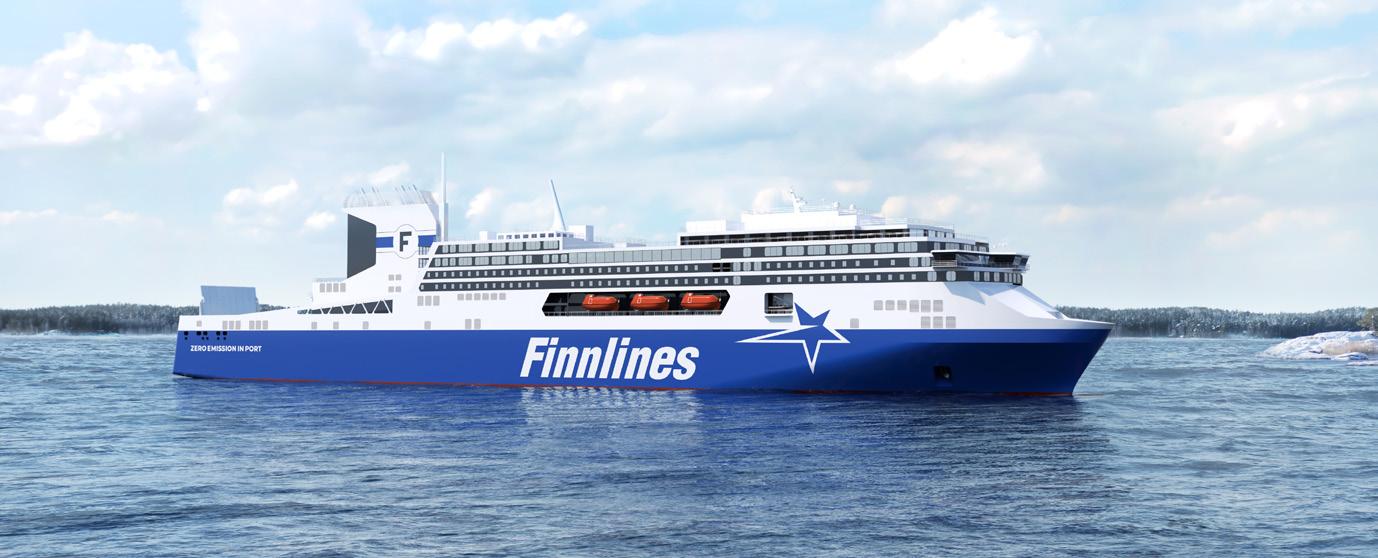

BLRT Repair Yards’ Western Shiprepair will convert two ships serving the Puttgarden-Rødby service with 5.0MWh battery systems. The €31 million project will also see both seaports fitted with charging facilities, with 12 minutes needed to charge the batteries up to at least 80% of the energy needed for the crossing. The conversion of the first vessel will start in August 2025, while the other in December. The hybridisation is slated for completion in early 2026. “We are delighted to have signed a contract with Western Shiprepair, one of BLRT Repair Yards, which has been awarded the conversion project after an extensive and lengthy tender process. By electrifying two of our Fehmarn Belt ferries, we are moving much closer to our goal of making the route direct emission-free by 2030 [Scandlines’ overall ambition is to become a direct emission-free company by 2040]. This is what our customers want, and it will significantly strengthen our competitiveness,” said Michael Guldmann Petersen, Scandlines’ COO. He also underlined, “It’s about more than just technology – it’s about responsibility. As a ferry company operating daily in one of the world’s most sensitive waters, we have a special obligation to protect the marine environment we operate in.” His company further highlighted in a press release, “Between 2013 and 2024, Scandlines has invested €380 million in
technologies to reduce emissions such as new hybrid ferries for the Rostock-Gedser route, rotor sails and new centre propeller blades for the Rostock-Gedser ferries, new highly efficient and low-noise thrusters for the Puttgarden-Rødby ferries and algae-repellent silicone paint, which saves energy compared to conventional types of bottom paint.” Ingrida Streckienė, Director of Western Shiprepair | BLRT Repair Yards, also commented, “We are honoured to continue our long-standing partnership with Scandlines through this milestone project that supports the green transition in maritime transport. Over the years, we’ve built a strong foundation of trust and collaboration, successfully delivering complex repair and conversion projects together. The conversion of two ferries operating on the Fehmarn Belt into plug-in hybrids is a significant step forward, not just for Scandlines’ ambitious sustainability goals, but for the entire ferry industry. At Western Shiprepair | BLRT Repair Yards, we are proud to contribute our technical expertise, proven track record, and production capacities to make this vision a reality. Our collaboration with Scandlines is a meaningful contribution to the ongoing decarbonisation of European ferry routes.” The German Ministry of Transport has awarded the project financial support that will cover up to 40% of the conversion expenses.

A two-week trial saw Stena Line’s two ferries drawing power from a hydrogen-powered generator connected to the company’s onshore power supply (OPS) facility at its Germany Terminal in the Port of Gothenburg. Hitachi Energy developed the hydrogen generator, with the PowerCell Group supplied the power modules and shared its expertise in fuel cell integration. Linde Gas provided the 100% green hydrogen for testing. “In 2030, a new EU regulation will come into effect, requiring container and passenger vessels to use OPS while at berth. According to a study by ICCT [International Council on Clean Transportation], this is expected to reduce emissions by just over one million tonnes of carbon dioxide per year,” the Swedish seaport highlighted in a press release. The port’s Head of Innovation, Viktor Allgurén, added, “Since the climate is a shared concern for us all, it is also in everyone’s interest that as many ports as possible around us succeed in meeting these demands. With our extensive experience in OPS, we are pleased to partner with Stena Line to serve
as a test bed for this new technology, which may very well prove to be a viable solution for many ports.” Anders Peterson, Group Head of Port Development & Engineering at Stena Line, also commented, “At Stena Line, we are eager to collaborate to test new technologies aimed at reducing emissions from our industry. This project shows that there are alternative solutions for ports that lack the infrastructure for shore power.” Tobias Hansson, Managing Director of Hitachi Energy in Sweden, also said, “We are very pleased with the results of the latest collaboration with Stena Line, the PowerCell Group, Linde Gas, and the Port of Gothenburg. We value working with these industry players to continue exploring new application areas for HyFlex and to demonstrate its broad potential – from construction sites to port terminals – to accelerate the energy transition.” HyFlex was already used to run a Volvo excavator during the construction of Arendal 2. The Port of Gothenburg also houses a hydrogen fuelling station for trucks and is testing hydrogen-powered work vehicles.

Paris Terminal, an operator of seven multimodal logistics facilities in the Île-de-France region, will deploy IDENTEC SOLUTIONS’ Reefer Runner 5G monitoring system at its Gennevilliers location. “This strategic move aims to enhance the efficiency and reliability of refrigerated container (reefer) logistics, particularly along the Seine River, aligning with broader goals of promoting sustainable multimodal transport,” the parties said in a press brief. Juan-Manuel Suárez, CEO of Paris Terminal, added, “Implementing the Reefer Runner 5G solution at our Gennevilliers terminal marks a significant step forward in our digital transformation and sustainability journey. This partnership with IDENTEC SOLUTIONS enables us to guarantee 24/7 visibility and safety for our reefer cargo, which is essential for our customers and for the growth of river logistics. By making inland waterway transport more efficient and reliable, we’re strengthening our commitment to the Seine Axis and contributing to a greener, smarter future for freight in the Paris region.”
IDENTEC SOLUTIONS’ Head of Marketing, Mark Buzinkay, also highlighted, “Partnering with Paris Terminal is a strategic milestone
for us at IDENTEC SOLUTIONS. We are proud to demonstrate the full capabilities of our Reefer Runner 5G solution in such a forwardthinking and multimodal environment. This deployment not only ensures reliable, real-time reefer monitoring for Gennevilliers, but also highlights how smart technology can support the growth of sustainable inland transport. We are excited about this collaboration and look forward to engaging with other container terminal operators and shipping companies across France to explore how we can help them achieve similar efficiencies and transparency in their cold chain operations.” The plug & play, real-time reefer data monitoring and management system will be deployed at Gennevilliers in phases, expanding to cover additional units, routes, and monitoring points in a scalable way. “This ensures the technology evolves in parallel with Paris Terminal’s cold chain ambitions, offering tailored digital oversight whether for a single container or hundreds across different transit modes,” the Reefer Runner 5G partners said. Paris Terminal runs seven facilities overall, thereof two specifically equipped to handle containers, including reefers.
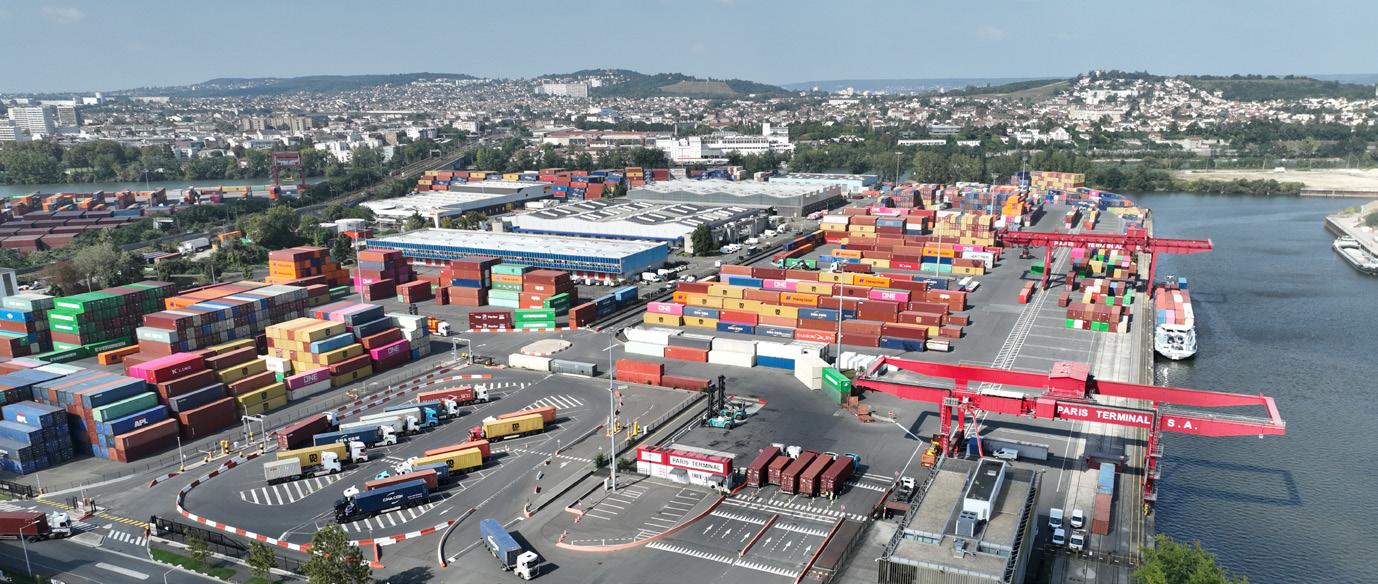
The two have signed a letter of intent to develop the Port of Hanko’s Koverhar Harbour into an offshore wind energy (OWE) hub for the 250-turbine-big, 4,000-megawatt-strong Noatun Åland North OWE farm. “Unlike a greenfield development, the Koverhar Harbour already possesses the fundamental infrastructure needed for the offshore wind logistics. With limited adaptations and targeted investments, it can be quickly optimised to serve the industry, making it a highly efficient and cost-effective solution,” the parties said in a press release. As such, the letter of intent outlines a framework for evaluating storage, assembly, and logistical needs. It also includes an option for using Koverhar in setting up Noatun Åland South (4,700MW). In addition, the Port of Hanko and Euroports have a separate exclusive agreement to explore the long-term development of the Koverhar Harbour to meet the growing demands of the general OWE market. “This agreement cements the Koverhar Harbour’s role as a vital node in the offshore wind supply chain in the Baltic. Our expertise in port operations and logistics will be instrumental in ensuring the seamless execution of these projects, and we look forward to working alongside OX2 to bring this vision to life,” said Frédéric Platini, CEO & Vice
Chairman of Euroports. Anders Wiklund, Regional Manager at OX2 and CEO & Chairman of the Board of Directors of the Noatun project companies (jointly held by OX2 and Ålandsbanken Offshore Wind I LP, a fund managed by Ålandsbanken Funds), added, “Our project represents one of the most significant offshore wind initiatives in the Baltic Sea. Partnering with Euroports and leveraging the strategic location of the Koverhar Harbour ensures that we have the necessary infrastructure and expertise to make this project a success.” Anders Ahlvik, the Port of Hanko’s CEO, also commented, “The development of the Koverhar Harbour into a hub for offshore wind logistics aligns perfectly with our long-term vision for the Port of Hanko. This collaboration strengthens our role as a key enabler of Finland’s renewable energy transition and will drive significant economic and infrastructure development in the region.” Juha Känkänen, Business Area Director (Energy Funds), Ålandsbanken Funds, summed up, “The Port of Hanko will be an important aspect of the construction of the Noatun North project, which brings vital green electricity to where it is most needed, Southern Finland, to enable new industry establishment and business growth for the region.”

The Danish Baltic seaport has retrofitted two Gottwald cranes, used for container handling in the New West Harbour, to run on electricity instead of diesel. The conversion, part of the Green Zealand Gateway project carried out in co-op with APM Terminals, also saw the set-up of a transformer station and other necessary electrical infrastructure. “With the electrification of our cranes, we are taking our green promises seriously and showing that we are an ambitious partner in maritime sustainability. Electric gantries are an important part of reducing our environmental impact, because the cranes no longer have to burn diesel for hours. We increase our competitiveness by setting a high standard for more sustainable container handling,” highlighted Bent Rasmussen, the Port of Kalundborg’s CEO. “Carbon neutrality is an important priority for many of the port’s customers, and it is therefore a necessity for the seaport to be able to offer services that are both
With the help of Rauma Marine Constructions and other research partners, the company has unveiled the concept of an all-electric (85-100MWh) ferry for the Helsinki-Tallinn service. The 195 by 30 metres ship will offer room for 2,000 passengers likewise 2,000 lane metres for cargo. With a speed of 23 knots, Viking Helios will complete the crossing between the two capital seaports in two hours. “Helios heralds a new era in maritime transport, just like the first sail, steam, and motor ships did in their time. The concept proves that large-scale emission-free maritime transport is no longer a utopia. The world’s largest fully electric passenger-car ferries could be in operation as early as the beginning of the next decade. We are strongly committed to realizing the ambitious vision that Helios represents,” commented Viking Line’s CEO, Jan Hanses. He furthered, “Electric shipping is not created solely by ship investments. It also requires efficient, reliable charging infrastructure in ports. The home port for the new
environmentally friendly and efficient. This helps to ensure that the Port of Kalundborg remains an attractive and competitive partner in the market,” the Danish seaport said in a press brief. Rasmussen added to that, “Our customers’ need for sustainable solutions is increasing steadily, and our ambition level is not only to meet their current needs, but to help them meet future ones.” The retrofitting was executed with the help of Port-Trade, which supplied the technical solutions, and Brix Elteknik, in charge of establishing the electrical infrastructure. However, Kalundborg’s e-Gottwalds can still run on diesel if need be. Rasmussen explained, “In times of uncertainty, it’s essential that we, as a port, can maintain our operations in the event of sabotage to the power grid. The ability to switch to diesel if the power goes out gives us the necessary flexibility and security to meet both environmental requirements and operational needs.”
electric vessels would be Jätkäsaari, where the Port of Helsinki has a development and expansion programme underway until 2032. The progress of this project is extremely important for our own plans.” Hanses also noted, “The Helsinki-Tallinn route performed particularly well last year [5.5 million passengers], and we believe volume will continue to increase [11.6m by 2040] – there is strong demand, based on need, for connections between Finland and the Baltics. EU emission trading fees and tightening regulations place an ever larger burden on fossil fuel-based maritime traffic every year, but emissionfree technology would enable us to increase capacity on the route. Our goal is to order two electric ships for the route, which would double our current capacity year-round.” The Viking Helios concept will serve as a basis for continued planning and for the invitation to shipyard tenders. Viking Line has also submitted a funding application to the EU’s Innovation Fund for the construction of the ferry.
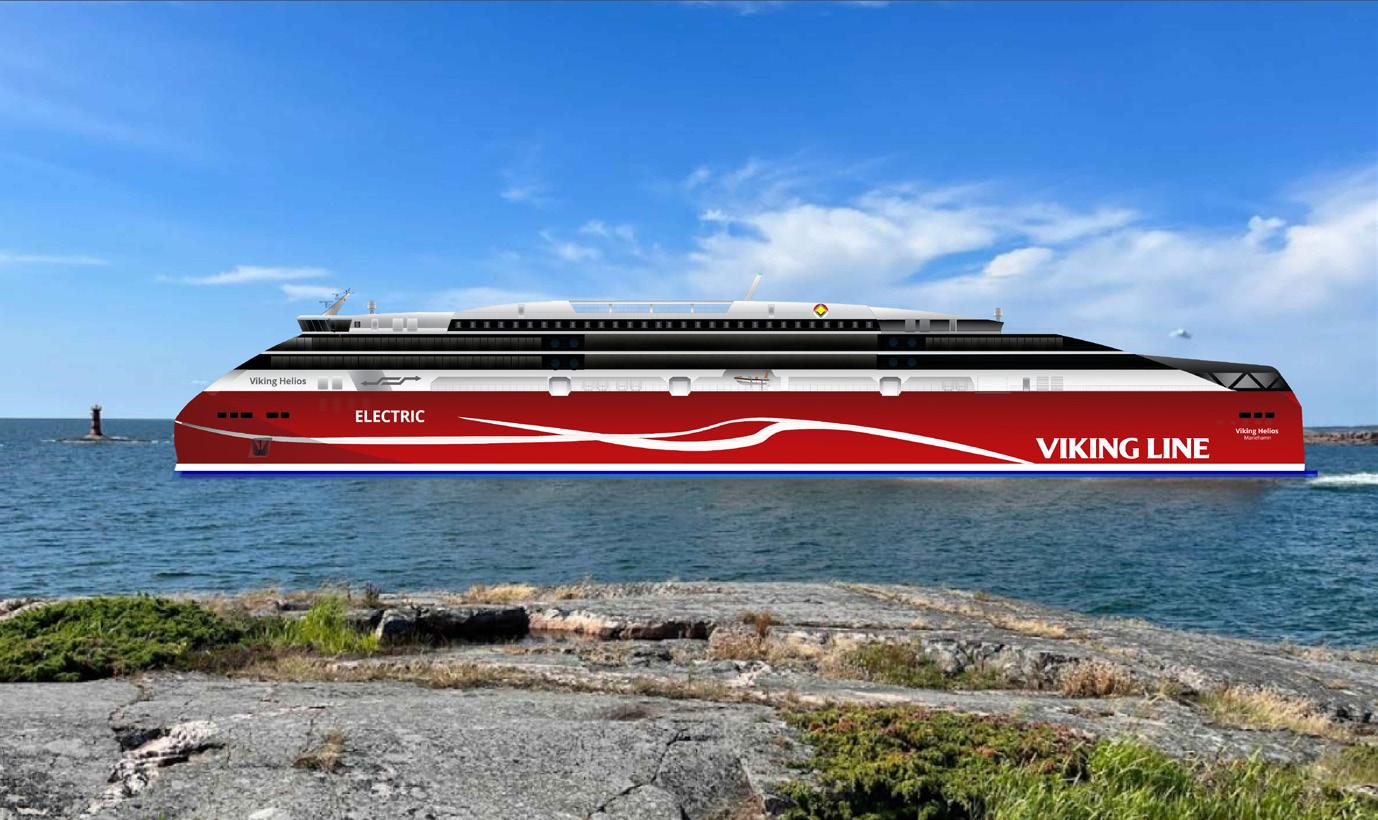

Wasaline has contracted the marine battery specialists from AYK Energy to up the ferry’s current battery system of 2.2MWh by an additional 10.4MWh. Delivery is scheduled for the autumn of this year, with Aurora Botnia using the new lithium iron phosphate pack as of January 2026. Thanks to the upgrade, Wasaline expects to cut the ship’s greenhouse gas emissions by 23% (towards fully carbon-neutral operations by 2030). Aurora Botnia entered traffic on 28 August 2021 and according to the Finnish-Swedish ferry line, her carbon footprint is now lower by 77% per trip vs Wasa Express, the previous ro-pax serving the Umeå-Vaasa crossing. Apart from battery operations, the dual-fuel ferry runs on liquefied natural gas, including its bio-version. Clients, both passengers and cargo, have the option to offset their footprint while sailing with Aurora Botnia. “We are continuously working to establish the Vaasa-Umeå route as a green shipping corridor. There’s growing demand for environmentally friendly transport, and intermodal cargo transportation from Europe is increasing yearly. This means
The ferry & ro-ro line has introduced a new concept of shipping, both for freight & passengers, who can now choose to sail fully electric or with biofuel in place of fossil bunker. The 100% electricity-powered cargo shipments are available between Naantali and Kapellskär, with the crossing’s two 5.0MWh cruise ferries greencharged while connected to onshore power supply in the Finnish and Swedish seaports. “Our utmost goal is to reduce emissions and we are already seeing concrete results. With the introduction of our new vessels, Finnsirius and Finncanopus, we have entered the hybrid era and can now offer our customers even more efficient and sustainable sea transport services. Although the cargo capacity of the vessels operating on the Naantali-Kapellskär route has increased significantly, yet absolute carbon dioxide emissions per nautical mile have decreased by 22%,” underscored Antonio Raimo, Line Manager at Finnlines. The biofuel Green Lane option for freight is available on the Naantali-Kapellskär, Malmö-Travemünde, Malmö-Świnoujście, and Hanko-Gdynia services. “Use of biofuels [derived from renewable sources] can reduce well-to-wake greenhouse gas emissions of transport by up to 90% compared with conventional fossil fuels,”
After months of speculation and curiosity about who is behind the mysterious advertisement , the Swedish company unveiled it’s them who created this new series of crane spreaders. Officially presented at TOC Europe 2025, Vectrix has been developed and manufactured entirely in Sweden. The new crane spreader series features a modular design that allows for cost-effective customisation to meet specific operational needs. “The latest enhancements also increased operational reliability, improved energy
The Danish seaport, the Esbjerg Municipality, and INEOS Energy hosted the groundbreaking ceremony for a terminal, part of what is hailed as the first full value chain for carbon capture & storage (CCS) in the EU. Once operational in late 2025/early 2026, the facility of Project Greensand will be able to handle up to 6,000 tonnes of CO2 at a time. In the first phase, some 400kt/year are predicted for handling, up to 8.0mt of biogenic & fossil CO2 in the future. Project Greensand says it expects investments of $150+
the entire transport chain can be carbon-neutral today. Expanding our battery capacity is a major step that allows us to make our vessel even more sustainable and allocate more capacity to batteries and biogas. Our collaboration with Finland’s and the region’s energy clusters makes innovative solutions like this possible and we are proud to be a forerunner in the industry,” underscored Peter Ståhlberg, Managing Director of Wasaline. Chris Kruger, Founder of AYK Energy, added, “This is the largest battery retrofit on a vessel to date, and we are extremely proud to be partnering with Wasaline as the provider of this advanced battery solution. Being recognised once again as a reliable and cost-effective supplier is extremely gratifying. This project exemplifies AYK’s vision of bringing high quality, safe and cost-effective solutions to address our customers’ requirements for environmentally friendly transport. The transition to electric and hybrid vessels is accelerating, and the AYK/Wasaline partnership is an excellent example of how working together strategically can make the change happen.”
Finnlines highlighted in a press release. The company’s Commercial Director, Merja Kallio-Mannila, added, “We want to offer our customers concrete solutions to help them achieve their decarbonisation targets. Both solutions ensure low emissions; for example, using biofuel can reduce carbon dioxide emissions by up to 700kg per trailer on the Hanko-Gdynia route.” Green Lane is also available for passengers on the Naantali-Långnäs-Kapellskär, HelsinkiTravemünde, Malmö-Travemünde, and Malmö-Świnoujście crossings. “If passengers choose this option, Finnlines will consume renewable biofuels to replace the corresponding volume of fossil fuels and the emissions per passenger on the route will decline,” the company said. “In April, we announced of a new investment programme, which consists of three methanol-powered ro-pax vessels to enter the route between Finland and Germany. These new and previous investments [20 purchased & ordered vessels over two decades at the expense of €2.0 billion] will enable us to offer our customers fossil-free freight transportation. This has raised great interest and we are confident that the demand will grow in the future,” commented Thomas Doepel, Finnlines’ President & CEO.
efficiency, reinforcing ELME Spreader’s commitment to engineering excellence,” the company underscored in a press release. ELME’s President and Founder, Gösta Karlsson, added, “Our new crane spreader range is a testament to ELME Spreader’s dedication to continuous innovation. We have listened to our customers and developed a product that we hope will not only meet but exceed their expectations in terms of reliability, safety, and efficiency.”
million across the Greensand CCS value chain to scale storage capacity (with CO2 ultimately stored offshore in the North Sea). “With today’s groundbreaking, we are not just starting a construction project – we are opening a new chapter, where Port Esbjerg plays a central role in the infrastructure needed for a greener Europe,” the seaport’s CEO, Dennis Jul Pedersen, commented. Learn more about Port Esbjerg’s latest developments in the article Esbjerg grows – in size, depth & through partnerships.

The Swedish seaport has contracted (SEK137 million; €12.6m) Peab to construct the 122-metre-long Berth 8. The project will also cover dredging, with part of the material stabilised and used for constructing the new infrastructure. Works will commence in June 2025, slated for
completion in the spring of 2027. “We are creating another ship berth, which will give us the capacity we need to be part of enabling the steel industry’s climate transition likewise grow the port organically,” commented Jens Jacobsen, Maintenance Manager, the Port of Oxelösund.
The Lithuanian seaport plans to have four onshore power supply (OPS) stations up & running in 2026, three at the Klaipėda Central Terminal for ferry traffic and one at the Klaipėda Container Terminal. Vakarų Resta has been contracted to carry out the design work as well as the construction operations (foundations for transformer stations) and to prepare the infrastructure for laying the cables from the transformer stations to the quays. The about €11 million project is partly financed (€8.6m) through the EU’s Connecting Europe Facility. The
AF Gruppen Sweden’s AF Bygg Väst will start setting up the 56 by 18 metres 19-megavolt-ampere (MVA) facility in Q2 2025, scheduled for completion in March 2027. The SEK129 million project (about €11.4m), supported by the EU Connecting Europe Facility with SEK90m, is being constructed to enable cold ironing at the Port of Gothenburg’s five container and two ro-ro/vehicle berths ahead of EU’s law requiring it for vessels above 5,000 gross tonnage in 2030. Once completed, Gothenburg will be able to offer up to 4.0MVA per berth (with the option to combine two outputs into one connection
port authority intends to buy green electricity for the OPS stations. “The Klaipėda Port is changing its face. The electrification of quays is not only a modern technology but also a clear commitment to the city, the community, and the environment. Imagine: vessels mooring at quays no longer emit smoke or noise – they use green electricity instead of fuel. The signed contract is the first concrete step towards this vision,” underscored Algis Latakas, the Port of Klaipėda’s CEO. By 2028, Klaipėda also plans to offer shore power to cruisers and its own port fleet.
with double capacity). By connecting container vessels alone, the Swedish seaport expects to lower CO2 emissions by at least 5,600 tonnes annually. “This transformer station is an important milestone that brings us significantly closer to shore-side power connection for container and car/ro-ro vessels,” underscored Magnus Nordfeldt, Head of Business Area Cargo at the Port of Gothenburg. The total onshore-power-supply investment across Gothenburg’s container and vehicle terminals, including cable installations and switchgear for the seven berths, is estimated at around SEK600m (€52.8m).
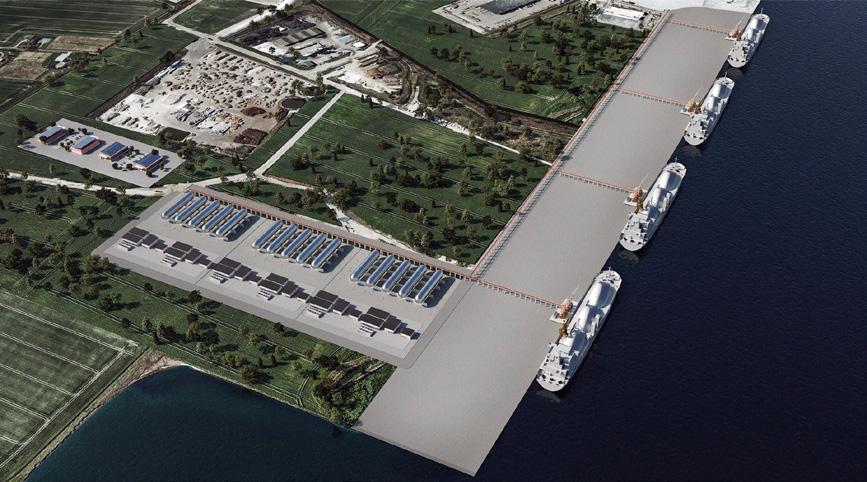
The Danish seaport and Fidelis New Energy’s Norne Carbon Storage Hub have signed a 30-year exclusive agreement that will see the setup of reception infrastructure for on- and nearshore storage of carbon dioxide. A new 500-metre-long berth will be erected in the Port of Aalborg, corresponding to an area of 60,000 square metres of quay space. Norne has already completed the front-end engineering and design studies for both the CO2 reception facility, with an initial yearly capacity of 15 million tonnes, and a connecting pipeline to nearby CO2 storage. In 2023, the EU Norne granted Norne the Project of Common Interest status. Recently, the project received a grant from the energy envelope of the EU Connecting Europe Facility (CEF). These funds will co-fund the development and construction of the new quay. “Norne’s PCI status ensures prioritised permitting, as the project is recognised as an urgent project of the highest national
significance and it is considered a project of overriding public interest by the EU when carrying out the relevant environmental assessments. The PCI status also opens the door for additional CEF Energy grants, which Norne is actively pursuing to support further development across the CO2 value chain,” the project partners underlined in a press brief. Kristian Thulesen Dahl, CEO of the Port of Aalborg, said, “We are very excited to continue the work we have done with Fidelis and Norne since 2021 to make the Port of Aalborg a key CO2 hub enabling economical and safe storage of CO2 onshore and nearshore. In addition, we are excited to be able to provide decarbonisation services to attract new industries to the Port of Aalborg. We therefore see the collaboration with Norne as an important business development differentiator as we continue to expand the port’s role in helping to decarbonise Denmark and the EU.” Lars Bo Christiansen, President of Norne, added, “Since 2021, we have worked closely with the Port of Aalborg, the European Union, the Danish Government, and other key stakeholders. We look forward to building on this longterm partnership – not only to expand beyond the current capacity of 15 million tonnes per year at Norne’s site, but also to attract new industrial projects to the port that require decarbonisation solutions.” Norne aims to begin storing CO2 as of mid-2027, with the CO2 transported from the emitter by pipeline or ship to the reception facility, where it will be forwarded to one of the existing natural underground storage structures for injection in new, dedicated CO2 wells. Norne says it has the ambition to store more than 30mt of CO2/ year by 2030 (equivalent to over half of Denmark’s yearly emissions).

Source: European Commission




HIGH IMPACT
Revolutionary applications that are potentially disruptive.
LOW IMPACT
Evolutionary changes with incremental improvements.
ADOPTION
The common way of operating and doing business in logistics.

by Przemysław
At TOC Europe 2025, we had the chance to catch up with the Ports arm of ABB. We picked the brains of the company’s Thomas Kumm on automation and artificial intelligence (AI), including the safety aspects and changes in the workforce.
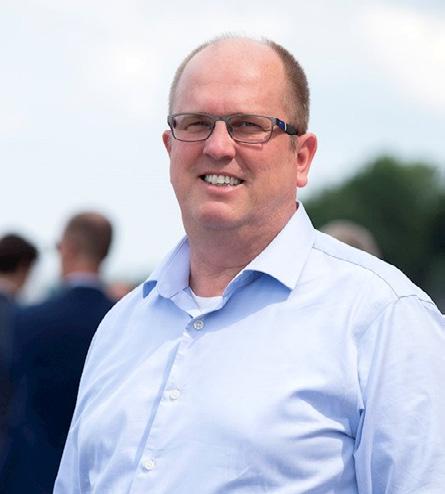
What are the areas ABB Ports is focusing on right now?
High-level automation and AI are some of the key topics for us. In the yard, for example, automation is becoming more and more commonplace for stacking cranes. Take Maasvlakte 2 in Rotterdam with 54 such machines, all ABB-automated, where less than a handful of persons manage the entire fleet.
Ship-to-shore crane automation is, against the above canvas, a development very much in the making, leastways in certain regions. Remote operations seem to be a necessary port of call in the move towards automating quay operations, and a valuable milestone for each terminal. Office-based work is not only safer but far more accessible to people who wouldn’t or couldn’t work on a crane. Thanks to that, a person in a wheelchair can be a fully functional operator. Ports and terminals can now be much more socially responsible by including people with disabilities in their workforces. We are also witnessing
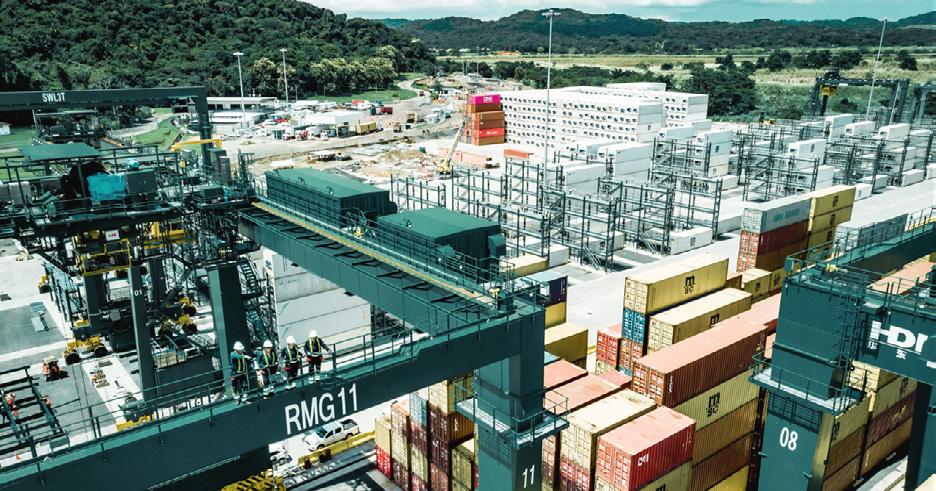
more women taking on operational jobs. Being physically in the operator’s cabin in one of those giant machines can be much more exhausting than sitting in the office, for anyone. Automation isn’t about eliminating jobs but changing them. It’s not that we need fewer employees when systems automate; the work is simply different. If you think terminal automation is about sitting for the entirety of a shift and watching how a few dozen yard gantries are bustling, well, think again! Even automated cranes will ask for help.
Automation is about performance – but there are contours and shades around this term, rather than it solely being about moves per hour. Take maintenance or claims, for instance. Automating a crane can involve installing cameras for various purposes and could be a source of footage that can come in handy should a carrier or shipper claim that the terminal operator damaged the transport unit. Like in sports, there’s video replay to check who committed a foul. That said, the traditional
performance metric also goes up. Whereas the speed of current automation systems isn’t yet a quantum leap versus humans – and as a matter of fact a manual operator can outperform automated machinery, albeit for short periods – automation provides consistency all the time.
Altogether, it’s more of an IT project, given that it takes more or less the same amount of time to deliver cranes whatever the level of terminal automation. It’s fair to say that deploying the terminal operating system involves a more organised workflow when lifting operations are more automated and less ad hoc. Other than that, the commissioning times for an automated and manual terminals are roughly the same – assuming that all the systems are in place to work together. The more projects ABB completes, the greater its experience and expertise. We can offer this to benefit global players with multiple facilities and smaller organisation which may be wrestling with developments at the concept into shape. The latter scenario is also more demanding for


us, but ABB Ports has experience from multiple projects worldwide on which it bases its guidance.
The automation industry is more mature on the whole than a decade or 15 years ago. Automating Container Terminal Altenwerder in Hamburg or Pasir Panjang Terminal in Singapore in the mid-1990s – now that was an adventure in itself! Now? Boom, here you go, you’re welcome! The more automation projects you do, the smoother it gets.
What is your take on AI?
We have surely gone a long way from neural networks in the 1990s. Today, AI is making its way into the transport business. I bet we’ll see many developments within a decade, some
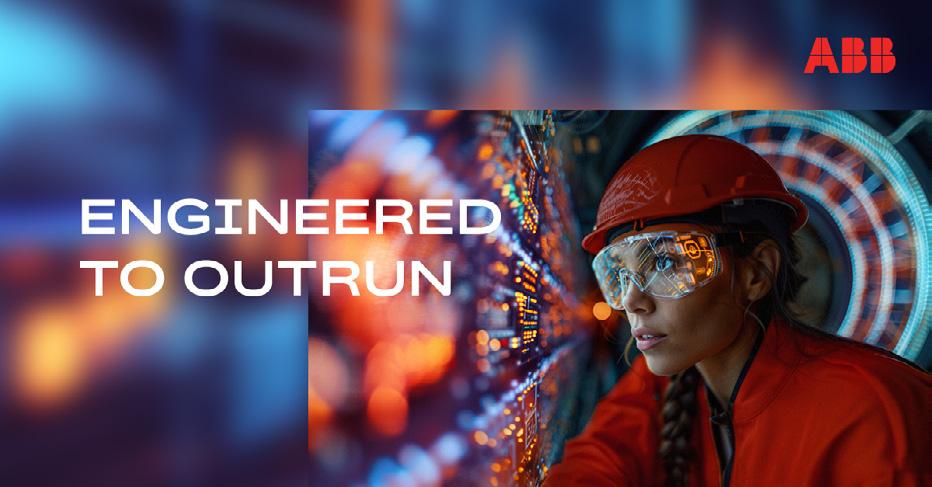
hardly imaginable today. The past two years have already brought tangible change. From talking about AI, we moved to engineers using the technology for programming, handling documentation, specifications, and to the use of machine learning to train algorithms for rail operations. AI has become standard in an engineer’s toolbox, although it will take more time for agentic AI, which emulates more human-like decision-making, to establish any role in our sector. To move forward, what we need is human oversight, along with constant testing and validation of AI as well as the data records to look back to see why something went wrong. That is why the EU’s regulation on AI for critical applications is a step in the right direction.
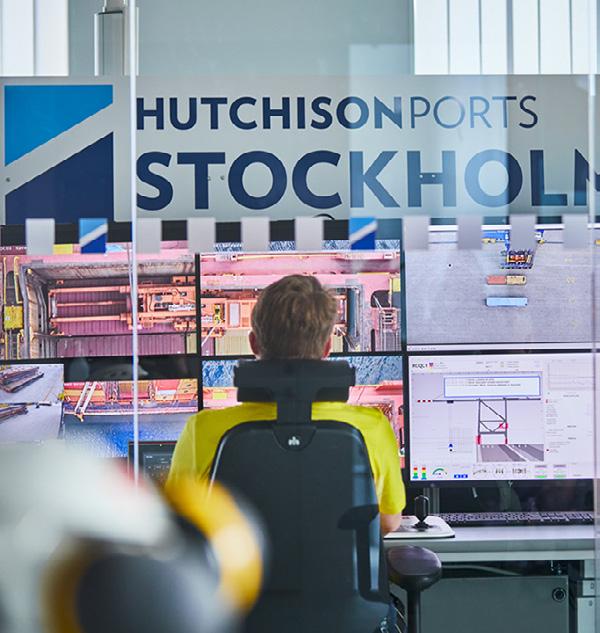
From a legal perspective, we’re entering a much safer cyber era, including AI. The 2027-incoming Cyber Resilience Act will require manufacturers and retailers to ensure cyber security throughout the life cycle of their products. ABB Ports has developed a suite of cyber security products. Clients can use them, or we can connect the solution they’re using to our system. Either way, being cyber secure is a must these days, regardless of whether you’re running manual or automated operations. But it’s important to emphasise that, once the systems are in place, cyber security is an operational issue and it is the responsibility of the customer. Negligence – in procedures, management or training - can compromise even the best solution from day 1.
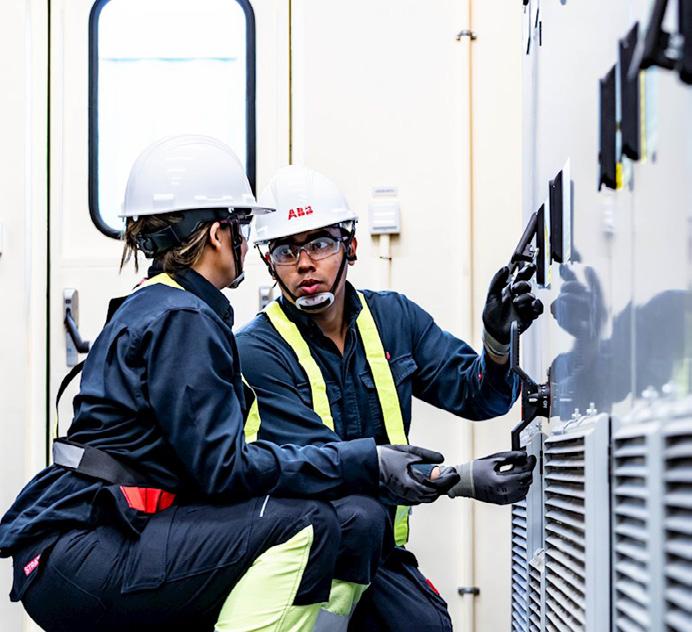

At TOC Europe 2025, we jumped at the opportunity to get a line on recent changes and developments at Tideworks from its President, Thomas J. Rucker. Among others, we talked about the new ownership status, leadership changes, what the company is cooking up for its terminal operating system (TOS), the ingredients for building relationships on trust and hands-on knowledge, data, and artificial intelligence (AI).
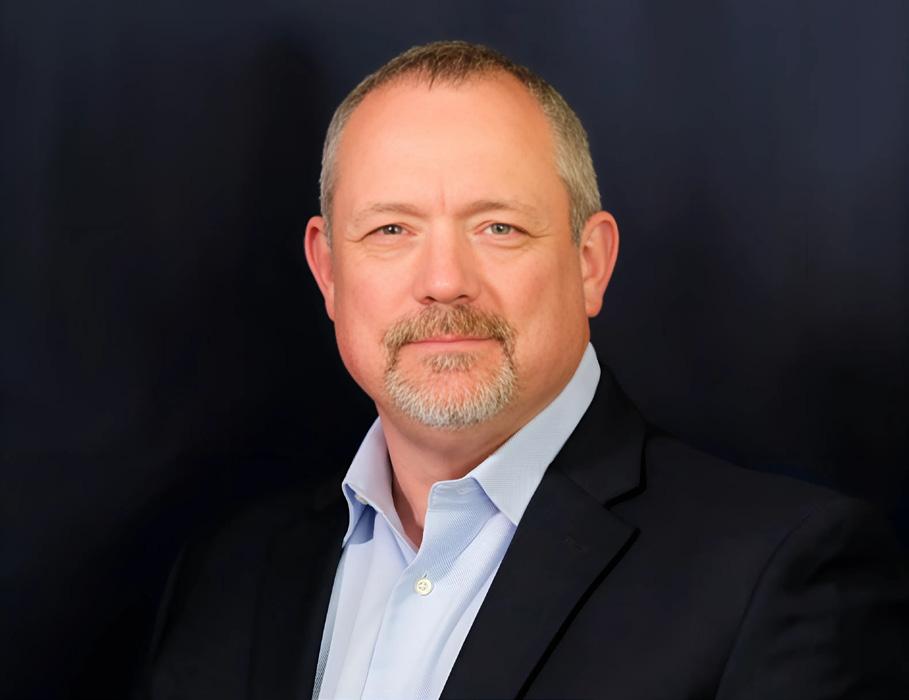
How is Tideworks driving evolution with ownership and leadership changes?
In 2019, Tideworks entered its next phase of growth following Blackstone Infrastructure Partners’ majority investment in Carrix, Tideworks’ parent company. With the introduction of Blackstone, Tideworks has entered an exciting period of growth and innovation. To fuel this transition, we’ve doubled down on markets and products with the greatest growth potential, bringing in seasoned leaders to guide the way, including Frederik
Stork, who leads the professional services division, Subbu Bhat, who is the VP of software engineering, and Julian Galvis, who is leading the go-to-market strategy for our next wave of innovation and market expansion. Tideworks continues to focus on its core strengths, intermodal rail being one of them. Many of our projects and investments target that business, primarily across the US, and we’ve begun developing our platform to accommodate new areas, such as Australia and Europe. We are building on our strong foundation in the UK through our 15-year partnership with Freightliner, which
has our rail TOS solutions deployed in its terminal network across England and Scotland.
What developments will we see regarding your software?
Tideworks offers a full-suite TOS, however, we’re continuing to invest significantly in expanding features that deliver added value for our customers. We’re developing our platform with interoperability at its core, ensuring customers can integrate, extend, and adapt without being tied to a single vendor.
Tideworks understands that selecting a TOS is a strategic decision for terminals. Selecting a TOS is a ‘sticky’ decision, and it’s tough for a terminal to switch to another solution, so the TOS needs to be able to grow with the terminal.
We don’t want to be part of the ‘preventing terminal growth game’ and believe that clients shouldn’t have to wait for the vendor to make enhancements, to quote the add-on, etc. Our product roadmap includes a set of customization options and application programming interfaces (APIs), so that users will be able to extend the solution as needed.
Tideworks wants to set up our customers to tap into the countless AI solutions that are being developed. For AI to truly do its work, however, accurate, realtime data is required. Ensuring the right data at the right time in the right format will differentiate high-impact solutions

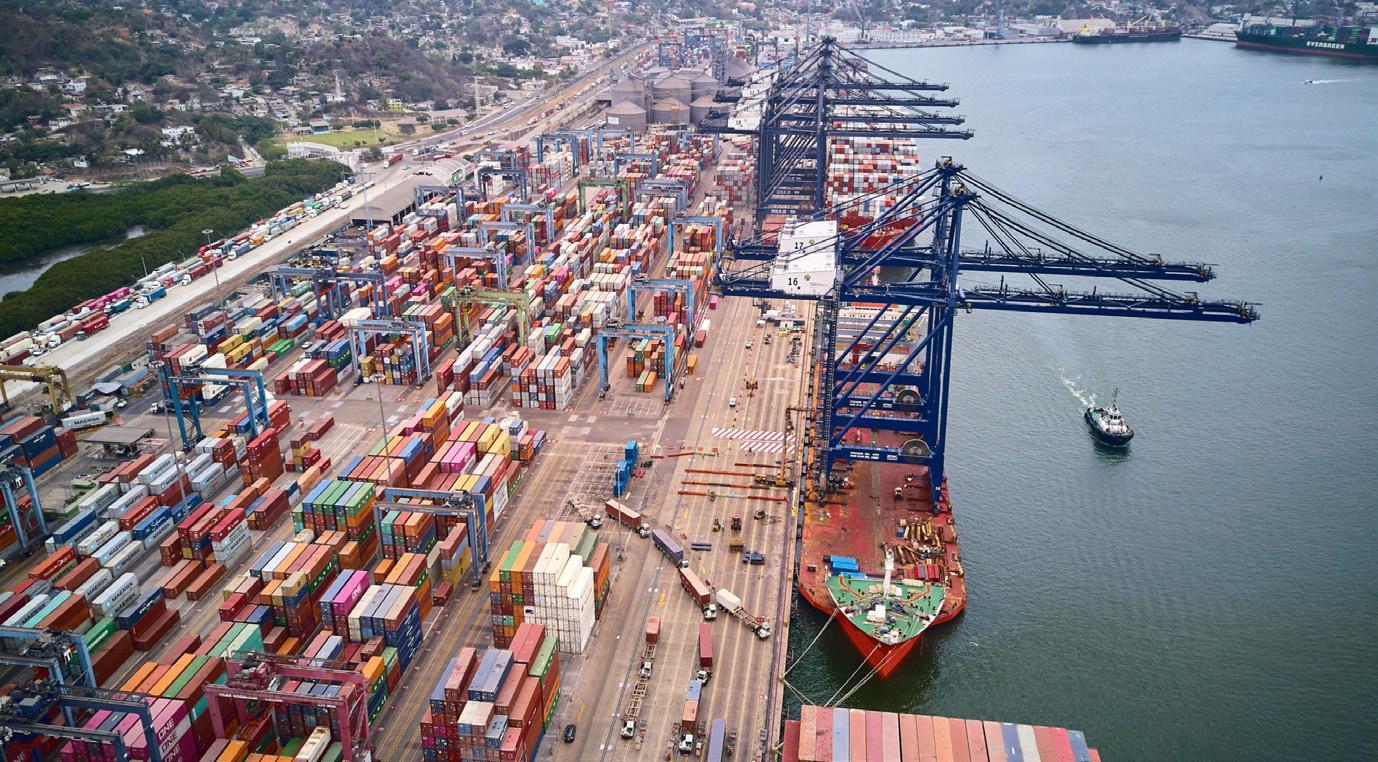
from the hype. But if you’ve got it, as Tideworks does, you’re fit to push the limits of terminal performance. Cybersecurity is another critical element of a TOS solution. We use industry-leading static code testing to scan our software before it runs, identifying and fixing security risks early so every solution is secure from the start. This phase is absolutely indispensable when you’re working with a connected TOS. We also do multiple penetration tests a year. In these times, when various cyber threats are on the rise, communicating with your clients about how you handle digital security is paramount. On-premise systems can be hardened with hardware or software-based security controls, adding a physical layer of defense to complement logical safeguards, or systems can be hosted in the cloud, with solutions like Amazon Web Services, which offer robust, enterprisegrade security designed to meet the highest industry standards.
Can you walk us through a potential commission?
We do a lot of pre-sales footwork to make sure our solution is a fit before we bring it to a prospective customer. That can include site assessments or pilots. Together, we can walk through
how our solution works and how it’s applicable to the client’s particular operations. If there are any gaps, we then get laser-focused on closing them with our product management team. Having ticked off all the solution fit related exercises, we move to project execution. We thoroughly assess readiness before go-live, ensuring each client’s team is well-prepared and confident in using the system. Our goal is always a smooth, successful transition with minimal disruption. Through implementation and beyond, clients are supported by a dedicated team of experienced professionals who stay closely engaged to address any questions, provide guidance, and help ensure longterm success.
Every client is assigned a client success manager, a high-touch, conciergelevel of service. Tideworks goes through quarterly business reviews with all of our customers to see how they’re doing, update them on the latest from us, and make any recommendations on new processes and technologies to implement to improve operations or lower operating costs. And there’s also hyper care support services we offer when the client needs our assistance beyond the implementation phase. That service is particularly attractive for operators who are just building their onsite TOS
team and the knowledge needed to be successful.
We recognize that teams evolve and internal expertise can shift over time. That’s why our professional services team stays engaged to provide ongoing support, operational consulting, and training as needed, helping clients maintain operational consistency and maximize longterm value. When our customers succeed, we find a deep sense of pride.
Is it challenging these days to recruit people to a software company, albeit a heavy-duty one, so to speak?
We seek hungry, purpose-driven individuals eager to make a lasting impact. They have to be passionate about the industry and love the supply chain. Here’s the thing: if you have the right mindset, even if you’re new to the industry, we know you can learn and build new skills. You just need the right guidance. We hire for character first. Some 80% of the people working on our professional services team are former operators (ex-planning and shift managers, stevedores, supervisors, you name it).
Take Frederik Stork, who visited around 200 terminals, give or take, over the past 13 years. The key is to speak the common language of operators, whether you’re in the US, Poland, Slovenia, or beyond.

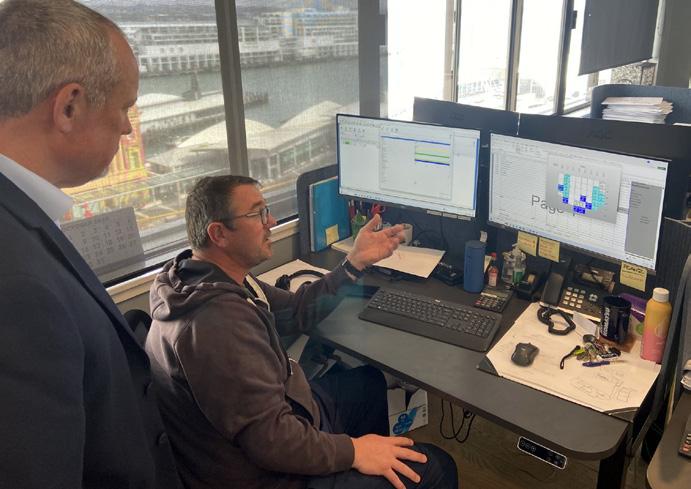
Tideworks was born out of SSA Marine, one of the world’s largest global terminal operating companies. I came up through IT and operations myself, spending many years working on a terminal. That background is most likely why I am at Tideworks: someone with hands-on experience and a sense of what operators need. I still remember pulling fiber in the tropics, setting up data centers from scratch, sitting in gate kiosks, and staying up all night with vessel planners. That experience, which I enjoyed deeply, allows me to sit alongside our customers, have real conversations about their operational challenges, and answer the most important questions: why Tideworks?
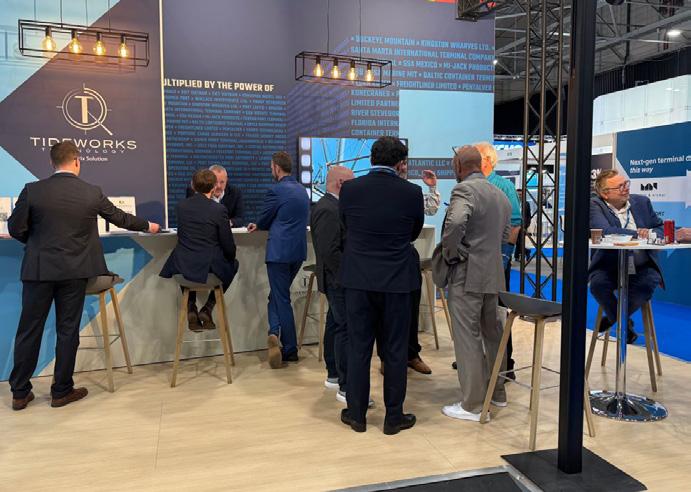
When you talk with a terminal client, it’s imperative that you understand their customers and community. Once you understand where the terminal fits within the broader supply chain, you can help them think through their challenges and find solutions. Think of a TOS vendor as a race team’s pit crew providing the tools, data, and quick adjustments that keep the operator running at peak performance. We’re not the driver, we don’t own the car, but we support them with the right team and broad experience. But it’s not only about deploying the right software. If anything, it first requires bringing in the right people with the right expertise. While we
have a strong team with deep operational expertise, I remember flying in people from the US and some of our Latin American partners to help tackle challenges on a project overseas. Having that network and the ability to tap into those kinds of resources has been a game-changer for us. Ultimately, it’s about helping terminals achieve operational excellence through their TOS. And that’s what will matter when the next big shift hits the industry, whether it’s a wave of autonomous trucks arriving at the gates, self-sailing vessels berthing all by themselves, quay cranes moving containers at twice today’s speed, or innovations we can’t yet imagine.


With the global economy continuing to grow in both size and complexity and the geopolitical environment shifting at an unprecedented pace, the entire port ecosystem – terminal operators, seaport authorities, shipping lines, customs agencies, and logistic providers – faces mounting pressure to modernize. Mega-container ships, evolving customs regulations, and the demand for transparent, real-time shipment tracking are driving a shift to smarter and more agile infrastructure. These factors require moving away from pen & paper or outdated IT systems while securing investment funds, maintaining daily operations, and remaining competitive.
We believe that modernization for ports will come through digital transformation. Aided by advanced technologies, it can reshape them to become smart, interconnected ecosystems that will orchestrate global trade in a live-and-direct manner. Our conversations with clients, industry leaders, and public sector agencies uncovered three strategies that are helping forward-thinking ports overcome barriers to reinvention, thus reinforcing their position as anchors of strong trade networks. When implemented effectively, they can result in more efficient and sustainable operations, increased resilience, and safer environments for workers.
Accelerating digitalization through trust…
The Maritime & Port Authority of Singapore’s (MPA) Just-in-Time platform allows multiple stakeholders to exchange and access real-time data on services required when ships arrive. This helps them coordinate pilotage, towage, bunker services, and supplies more efficiently, reducing time spent at anchorages.
Similarly, the Port of Rotterdam has implemented an artificial intelligence (AI)-driven platform called PortXchange, which integrates data from shipping lines, terminal operators, and customs agencies to provide on-the-go port call coordination. For Maersk, collaborating through PortXchange to share data about its vessel movements has generated a 20% reduction in wait time, resulting in faster turnaround, fewer delays, and significant cost savings.
One of the primary approaches to modernizing maritime ports is fostering ecosystem collaboration. Ports are complex systems involving multiple stakeholders, and effective co-op is essential for reducing bottlenecks. Given their central role in coordinating operations, seaport authorities are uniquely positioned to drive these initiatives. Beyond increasing operational efficiency and resilience, ecosystem collaboration can also help tackle the common challenges to modernization: high costs, operational disruption, siloed legacy systems, and data-sharing concerns.
To overcome the significant costs of digitization and potential resistance to change among stakeholders, ports must develop compelling business cases that align with each party’s specific goals, such as improving efficiency, safety, or sustainability. By working together, stakeholders can unify around common objectives and build trust. That trust will be crucial during the next stage: establishing seamless data sharing and implementing multistakeholder platforms. As direct competitors, shipping lines are often hesitant to share data, fearing it could compromise their market advantage. Building the trust needed for effective data-sharing begins with clear goals and transparent data governance policies that define access, usage, and security measures. Technologies such as decentralized blockchain can enhance transparency and traceability. Somewhat counterintuitively, data-sharing can improve cyber security by helping spot patterns and identifying risks through
shared intelligence. Finally, cultural openness is key – regular workshops, crossstakeholder forums, and leadership buy-in encourage greater transparency.
In order to bring all interoperable systems together, we recommend organizations focus on building a strong ‘digital core,’ which we define as a technological capability that brings together key components of cloud, data, AI, and security to drive reinvention and which enables adaptability to change.
Leading ports implement comprehensive training programs to upskill their workforce. Among others, MPA and the Singapore Maritime Foundation have formed the Tripartite Advisory Panel to unite industry partners, unions, and academia. Together, they attract young talent, level up the current workforce’s expertise, and redesign job roles. Their Workforce Singapore’s Career Conversion Programme (CCP) supports midcareer professionals in skills conversion and new roles in port operations and maritime services. Since 2019, the CCP has talent-tuned over 340 individuals, focusing on digitization, decarbonization, and cyber security.
Across all industries, the proliferation of AI is changing skill requirements for many jobs. Engaging the workforce is crucial for the successful implementation of digital transformation in ports. Resistance to change from employees concerned about work loss can hinder the adoption of new technologies and processes. Therefore, it is essential to involve the workforce in the modernization journey and provide them

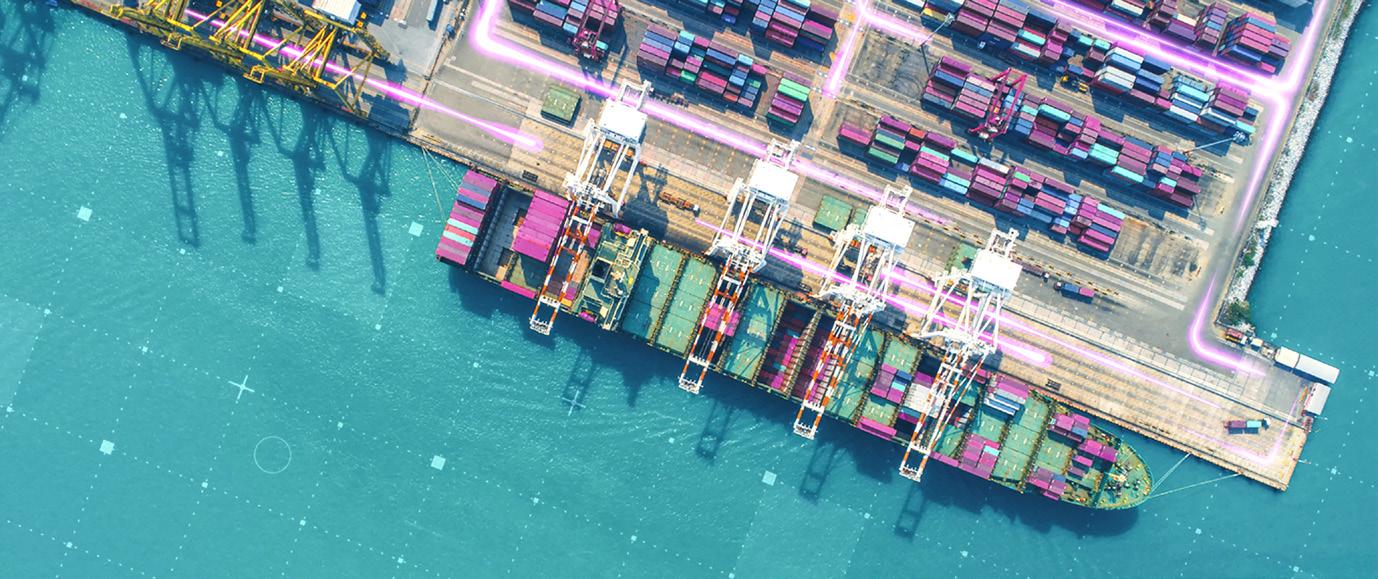
with future-fit training and support. As the maritime ecosystem transforms, new jobs are being created in areas such as data analytics, automation, and sustainability. Initiatives like retraining longshore personnel as computer tech operators can improve job quality, safety, and operational efficiency – while also ensuring that ports remain competitive in an increasingly digital world.
Fostering a culture of innovation and continuous improvement will not only secure stakeholder engagement but, in the long term, create a feedback loop where employees train and improve the systems to fit what is needed. Ports cannot simply impose new technologies on workforces to modernize operations – they must ensure workers feel they own the technology and see its benefits in their day-to-day tasks.
The Port of Rotterdam has installed sensors, known as ‘smart bollards,’ along its quay walls to gather crucial structural data. By integrating this digital technology into the existing infrastructure, the Dutch seaport has enhanced its return on capital investments: the data collected has revealed that the quay walls have a longer lifespan than initially anticipated.

Sarah Banks leads Accenture’s global Transport & Logistics practice, bringing over 25 years of experience driving digital transformations that help clients adapt to industry’s evolving demands.
In another example, the Port Innovation, Engagement and Research center at the Port of Halifax fosters research and innovation from various stakeholders in the maritime industry. Its most successful projects include real-time emissions monitoring with the help of AI or deploying autonomous surface vessels to remove floating pollution from waterways. Building a long-term, scalable vision is essential for sustainable port modernization. This involves developing a strategic plan that aligns with the seaport’s longterm goals and is flexible enough to adapt to future changes. Leading ports adopt a phased approach to digital transformation, starting with pilot ‘quick win’ projects and gradually scaling up successful initiatives. This helps them showcase the value to stakeholders to maintain their support and break through the barrier of high financial investments and operational disruptions, which can be particularly daunting in such a high-volume industry.
Projects managed within innovation hubs allow for continuous exploration of new technologies while minimizing risks. These small-scale initiatives allow ports to refine solutions in a controlled environment, ensuring that technologies are both
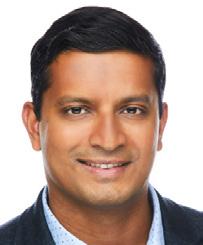
Prasanna Ellanti leads Accenture’s global Border Services industry, bringing nearly two decades of deep experience in customs, immigration, border and identity management, and ports transformation.
effective and scalable before larger roll-outs. They can also help test the benchmarks and metrics before rolling out full-scale plans.
The modernization of maritime ports through digital transformation is not just a tech upgrade but a strategic imperative. By enhancing ecosystem collaboration, engaging the workforce, and building a longterm, scalable vision, ports can overcome the challenges of outdated infrastructure, high costs, and operational disruption. Better coordination between seaports, ocean carriers and terminals can enhance the resilience of the entire global trade system and more quickly restore supply chain normalcy in case of crisis. The success stories of leading ports like Rotterdam, Singapore, and Halifax (and many others, big & small) demonstrate the potential of digital transformation to enhance efficiency, reduce bottlenecks, and achieve significant cost savings.
As the global economy continues to evolve, the smart ports of tomorrow will be those that embrace digital technologies and leverage them to create resilient, interconnected ecosystems that drive sustainable growth and competitiveness.
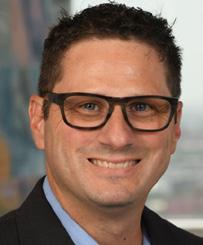
Johnny Anderson is a strategist with the Supply Chain and Operations practice at Accenture, where we help our clients shape tomorrow’s value chains to positively impact business, society, and the planet.

by Eirik Ovrum, Principal Consultant in Maritime Environmental Technology, DNV
Driven by EU regulations and the International Maritime Organization’s (IMO) goals, the shipping industry is maintaining its course for decarbonization but making slow headway toward an alternative-fueled fleet. DNV’s latest Maritime Forecast to 2050 (MF2050) report confirms our previous finding that carbon-neutral fuels will remain expensive and in limited supply for the near future. As such, it recommends more realistic decarbonization measures for shipping over the next decade.
Maritime’s strategic focus for decarbonization in the shortto medium-term should be on operational and technical solutions to improve energy efficiency and otherwise reduce greenhouse gas (GHG) emissions. MF2050 evaluates the decarbonization challenges and the toolbox of technologies for designing and retrofitting ships to future-proof them.
Shipping cannot meet 2030 targets by using carbon-neutral fuels
The destination and waypoints for shipping’s energy transition are set by the IMO goals: a 20% emission reduction by 2030, a 70% reduction by 2040, and full-scale decarbonization by or around mid-century (all compared with 2008 levels).
Adding insight into how much carbonneutral fuels can drive the transition to 2030 and beyond, MF2050 assesses their existing and planned production. Factoring in the probability of plans becoming reality, it
estimates potential ‘High’ and ‘Low’ levels of fuel output for each year.
The report estimates the cumulative capacity of ongoing or announced carbonneutral fuel production capacities for 2030 to be 44-to-63 million tonnes of oil equivalent (mtoe). Maritime demand in 2030 is forecasted at 7.0-to-48mtoe. Depending on the actual demands, shipping would need 10-to-100% of the actual available carbonneutral fuels to reach the IMO targets. But our modelling results show it will be tough for shipping to source its needs if production follows the ‘Low’ trajectory. Even if production is ‘High,’ other decarbonizing industries, such as aviation and road transport, will compete for these fuels.
On-board carbon capture (OCC) is attracting interest because it could delay the need for carbon-neutral fuels by removing carbon dioxide (CO2) from conventional fuels and technologies. OCC could be technically
and economically feasible depending on carbon pricing and the availability of value chains and infrastructure for carbon use or permanent storage, a recent DNV white paper concluded. The scarcity and high cost of carbon-neutral fuels could potentially support a stronger business case for OCC.
MF2050 assesses the value chain required and presents the status of and outlook for carbon storage, suggesting how OCC could become viable for vessels on busy shipping routes. Based on the ‘High’ and ‘Low’ trajectories of CO2 storage capacity for all industries and purposes (excluding enhanced oil recovery), the report sees 47-to-67 million tonnes of CO2 capacity being available in 2030 compared with shipping’s estimated storage demand of 4.0-to-76mt CO2
That said, out of the 96 planned projects for dedicated CO2 storage, less than 10 have reached the final investment stage (and most are still concepts). The uncertainties weigh against installing OCC on ships immediately, but in our exploratory
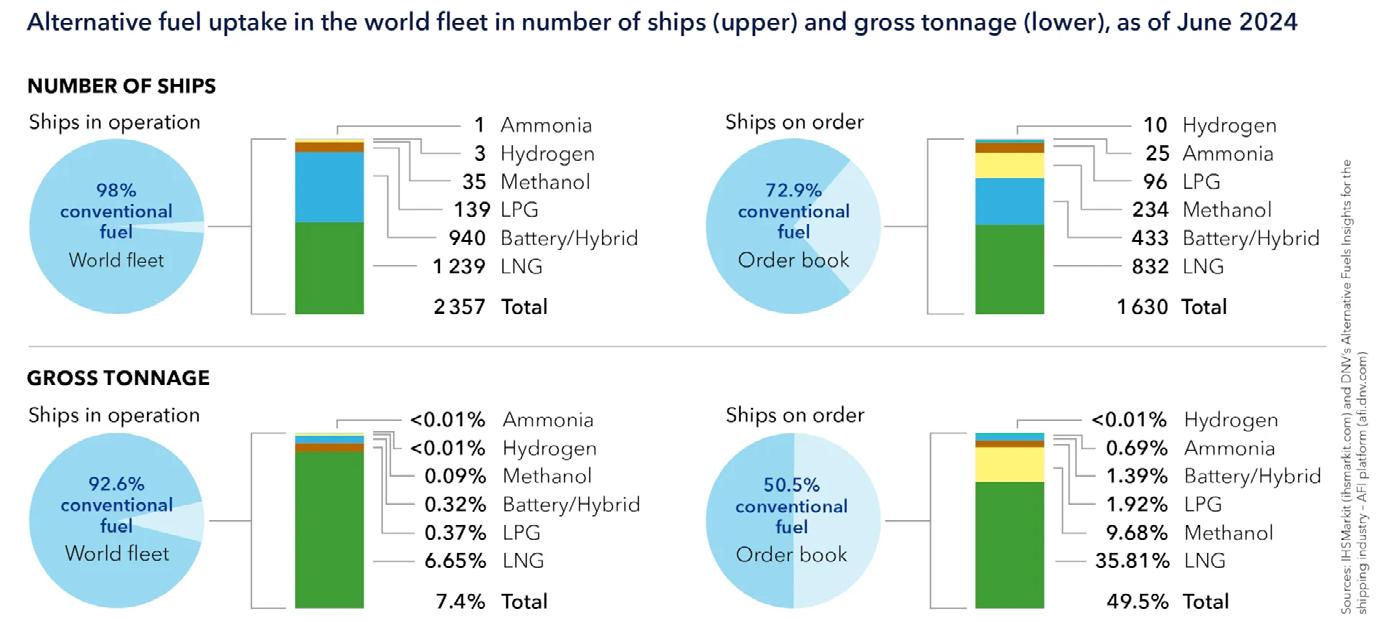


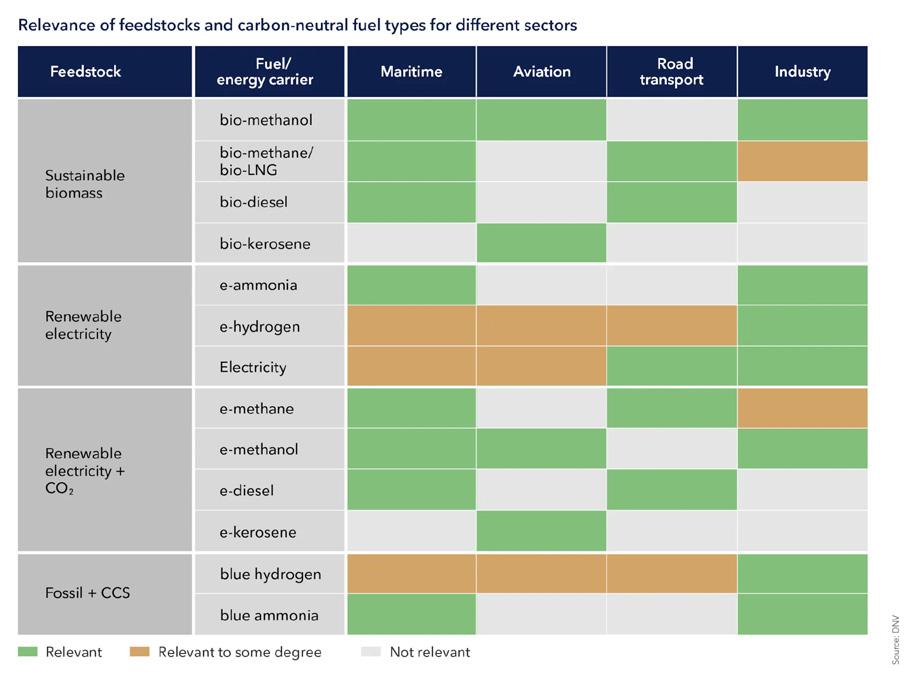
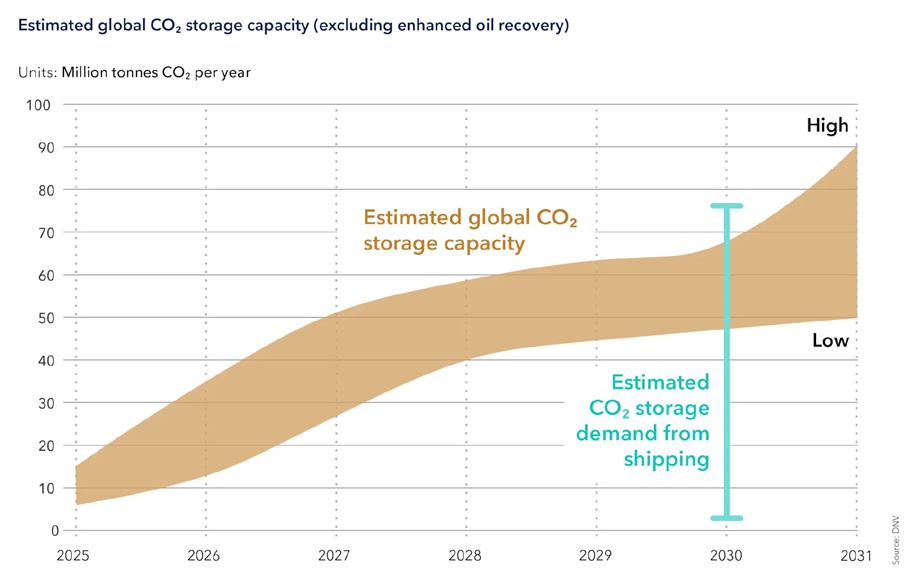
scenarios for achieving decarbonization goals, OCC emerges as an important technology for GHG reduction after 2030.
Maritime clearly needs to work with developers to secure carbon-neutral fuel supply, likewise CO2 storage, to maximize the longer-term potential of these technologies for decarbonizing shipping. However, the inescapable message is that energy-efficiency measures are essential for achieving fuel and emission reductions to at least meet the earlier IMO 2030 targets and ensure profitability into the 2030s and 40s.
Two-thirds of the energy used to produce propulsion is lost. MF2050 outlines the options to reduce these losses through energy efficiency, thus providing cost-efficient and predictable pathways to emission reduction. It estimates that operational and technical energy-efficiency measures can reduce fuel consumption by 4-to-16% by 2030, contributing to emission reduction. Energy efficiency provides cost-efficient, predictable pathways to emission reduction. The business cases for energy-saving technologies may now be better when evaluated against the cost of alternative fuels. Energy efficiency can give shipowners a competitive edge to operate profitably into the 2030s-40s.
MF2050 finds 72 waste heat recovery systems on order, twice the number currently installed. Some 166 air lubrication systems are operating today, with 280 on order for newbuilds. Around 90 large vessels could have wind-assisted propulsion systems by 2025, nearly triple the tally of 31 at the start of 2024.
Around 7.0% of ships’ energy consumption is in port. The resultant emissions can be abated using power from the shore. The degree of abatement, however, depends on the carbon footprint of the local electricity supply – whether it comes from renewables such as wind or solar.
MF2050 compares energy losses from direct use of shore power and when producing electricity from onboard generators running on fossil fuels or the electrofuel e-ammonia. The energy losses are used to calculate the total GHG intensity per usable energy unit. The calculations consider power-grid GHG intensity for different countries and regions and from coal-fired power generation.
One key finding is that the well-to-wake (WtW) emissions from onboard power production in a marine gas oil-fuelled generator

set exceed many countries’ average GHG power grid intensity. Consequently, using shore power can lead to efficient WtW emission reductions. Another finding is that to positively affect the vessel’s GHG emissions, electrofuels must be produced using electricity with very low GHG intensity.
voyages open door to recharging ship batteries in port
More than 900 ships operate with batteries for hybrid power systems or that can be charged by shore power, according to DNV’s Alternative Fuels Insight. MF2050 reviews what influences investment in such onboard battery systems can have. For example, a ship making many short-duration voyages will have more chances to charge batteries in port than one sailing longer journeys. Looking at ships above 400 of gross tonnage in 2023, it selects those using 80% of their fuel (when out of port) on short voyages, which would allow frequent battery charging and for batteries to cover ‘a substantial amount’ of a ship’s annual energy needs. MF2050 then evaluates how much fuel is consumed on these short voyages.
Evaluating the potential for plug-in hybridization
The 4,000 ships using 80% of their voyage energy consumption on trips shorter than 24 hours consume 6.0mtoe per year in energy while sailing on these short trips, equivalent to 2.4% of the world fleet energy use. The report finds that increasing voyage duration to 72 hours results in 8,000 ships using 80% or more of their voyage energy on short voyages – 6.2% of world fleet energy use.
We conclude that the potential for plug-in hybridization can be boosted by modifying current operational patterns or by building vessels specifically for shorter voyages. In addition, better battery and charging technologies can improve the energy efficiency of on-board power systems based on internal combustion engines. Greater efficiency, in turn, boosts the business case for investing in on-board batteries for plug-in hybridization.
Can nuclear propulsion support ship decarbonization?
Building on a case study from last year’s edition, the 2024 report updates and elaborates on factors relevant to answering this question. It discusses whether small modular reactors could be widely used in the global merchant fleet, potentially creating opportunities for standardization and joint development in technology choice, regulation,
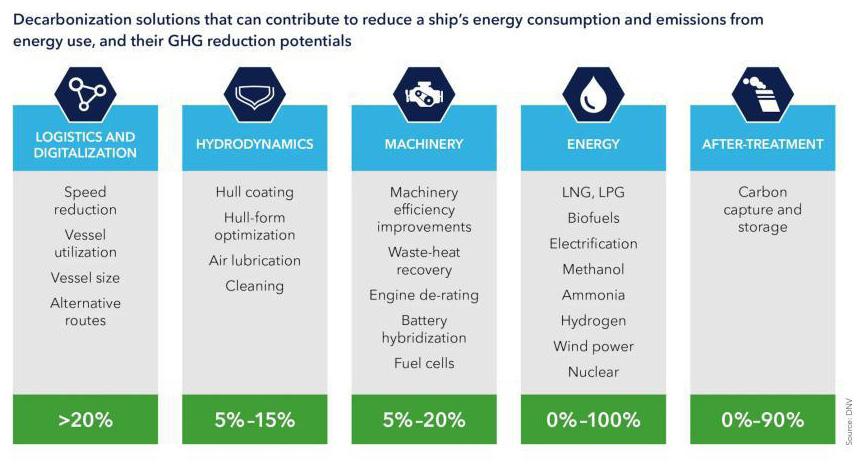




and safety follow-up for onshore reactors. If commercial, technical, and political barriers can be overcome, there could be an opportunity for a nuclear reactor program dedicated to shipping to accelerate the development of nuclear power overall.
MF2050 extensively analyzes how digitalization can enable operational efficiency and smooth contractual arrangements, as well as facilitate reliable, flexible, and dynamic emission reporting.
Recent advancements in digital tools –like artificial intelligence, machine learning, the Internet of Things, and computer simulations – have greatly improved and facilitated the reduction of the carbon footprint of shipping operations. These technologies fall into four categories: sensing, enabling, data handling, and decision-making. When interacting, these can help the shipping industry to fully leverage digitalization
for better efficiency and sustainability.
Advanced simulation and optimization models can help design next-generation energy-efficient ships. Real-time data can facilitate truly integrated maritime networks. For example, the container sub-sector could cut energy use by up to 14.2% by coordinating just-in-time arrivals, according to a study commissioned by the IMO-Norway GreenVoyage2050’s Global Industry Alliance
possibilities from digitalization requires data quality and reliability to create trust. Digital tools like DNV’s Emissions Connect can help to build that trust across shipping.
Paying the price for decarbonization
Digitalization can also make vessel performance more transparent, showing seafarers how they can directly impact decarbonization. Additionally, green and digital shipping corridor projects with complete logistics chains could pilot scalable optimization solutions enabled by digital tools.
Examples in the report emphasize how emission reporting, new contractual arrangements, and regulatory mechanisms, such as pooling and book & claim, depend on transparent, reliable data backed up by a trusted source. Exploiting all the decarbonization
Beyond the fuels, technologies, and operational measures covered, MF2050 stresses that successful maritime decarbonization requires progressive, goal-orientated regulatory frameworks. This is highlighted by modelling the impact of regulations such as FuelEU Maritime’s pooling mechanism, which will support a switch to fleet-wide fuel strategies and derisk investing in alternative-fueled vessels.
Smart decision-making and strategic investments are needed today to lay the foundations for future emission reductions. Using an updated version of our GHG Pathway Model, MF2050 pragmatically assesses the options to assist maritime stakeholders in unlocking the decarbonization code.
DNV is the world’s leading classification society and a recognized advisor for the maritime industry. We enhance safety, quality, energy efficiency and environmental performance of the global shipping industry – across all vessel types and offshore structures. We invest heavily in research and development to find solutions, together with the industry, that address strategic, operational, or regulatory challenges. Visit dnv.com/maritime for more information.

by Arnaud
Data standardisation – the creation of consistent formats and definitions for digital information – promises to revolutionise the offshore marine industry, as the introduction of the shipping container did for global trade in the 1950s. Standardised data is more than a technical necessity; it is the foundation for modernising a traditionally fragmented industry. As regulatory and economic pressures mount, data standardisation emerges as a tool not only for compliance but also for achieving industry-wide excellence. Opsealog’s latest white paper, Creating Value from Data Standardisation , unpacks how this shift can unlock unparalleled opportunities in efficiency, environmental compliance, and strategic growth.
Modern maritime operations, particularly in the offshore sector, generate substantial amounts of data from diverse sources – up to 20 gigabytes per vessel per day from sensors, engines, noon reports, etc. However, for the majority of ships, this dataset largely remains confined to onboard systems, with only daily reports and other spreadsheet-based summaries being transmitted ashore. While real-time data sharing from sensors is currently limited to a few vessels, this capability is expected to expand significantly in the coming years.
Standardisation provides a common language for interpreting this vast data pool, ensuring accuracy and reliability. For example, when measuring speed, one nautical mile-per-hour (1.0 knot) is different from one ‘statute’ mile-per-hour, with 1.0m/h being about 15% faster than 1.0kn. If those units are confused, this could lead to significant cumulative errors in the data. As such, data standardisation is at its core about creating a shared frame of reference. Just as English became the international language of shipping to facilitate global collaboration, data standards can serve as the universal ‘tongue’ for digital communication across fleets, regions, and stakeholders.
While regulatory requirements from bodies like the International Maritime Organization (IMO) and the EU are significant drivers of data standardisation, its
benefits reach far beyond meeting compliance mandates. Standardised data offers a host of strategic advantages that can transform maritime operations, enabling companies to optimise efficiency, enhance transparency, and align with sustainability goals.
One of the most immediate benefits is enhanced operational performance. With standardised data, operators can more effectively monitor key performance indicators, including fuel consumption, fleet capacity usage, engine efficiency, and emissions. Realtime tracking and analysis not only enable operators to optimise fleet utilisation but also reduce downtime, increase technology availability, and minimise the risk of marine logistics breaches. These capabilities allow for targeted interventions to address inefficiencies and measure their impact with precision.
Another critical advantage is the potential for predictive maintenance. By leveraging standardised datasets, operators can detect early warning signs of equipment failure, enabling them to address issues before they escalate. This proactive approach reduces downtime, extends asset lifespans, and boosts overall operational reliability – key factors in maintaining competitiveness in a demanding market.
Standardisation also brings improved transparency, particularly in commercial relationships. When shipowners and charterers operate within a common data framework, it becomes easier to objectively assess performance, ensure contract compliance, and resolve disputes. This level of clarity fosters trust and efficiency in business
transactions, reducing friction and enabling more collaborative partnerships.
Streamlined ESG reporting is another critical benefit as industry stakeholders increasingly demand accountability in environmental, social, and governance metrics. Standardised reporting simplifies the process of compiling and sharing ESG data, ensuring that information is presented consistently and reliably. As well as strengthening trust among stakeholders, it also enables industry players to consolidate data, share benchmarks – which can be done anonymously – and collectively progress towards shared sustainability goals.
The maritime industry is teeming with untapped data potential. From fuel monitoring to dynamic & global positioning systems, modern vessels are equipped with tools that can generate actionable insights. However, without standardisation, this data often fails to deliver its full value. For example, comparing fuel efficiency across a fleet requires consistent data formats. Standardisation ensures that data from various sources can be integrated and analysed cohesively, revealing insights that drive operational improvement.
Moreover, automation enabled by standardisation can reduce the burden on seafarers, who often spend significant time inputting data manually into various formats and systems. By automating data collection and reporting, crews can focus on operational tasks, improving efficiency while reducing errors.
The long-term benefits of data standardisation are thus immense. As fleets adopt


multi-fuel capabilities and integrate clean technologies, operators will require increasingly granular data to assess performance and make informed decisions. Standardised data provides the foundation for evidencebased decision-making, enabling operators to identify inefficiencies, plan retrofits, and build next-generation vessels. Also, data standardisation prepares companies for future regulatory changes. By establishing robust data systems now, operators can adapt more quickly to emerging requirements, positioning themselves as leaders in a competitive market.
Laying the foundation – together
Encouragingly, the maritime sector is already taking meaningful steps towards embracing data standardisation, with industry groups leading the charge. These collaborative efforts demonstrate the sector’s recognition of standardisation’s transformative potential and highlight the progress being made in laying the foundation for a more efficient, transparent, and sustainable future.
The Smart Maritime Network has made significant strides by releasing Version 1.0 of the Standardised Vessel Dataset for Noon Reports. This initiative provides a standardised dictionary of names, units, and formats, simplifying data exchange and ensuring consistency across reporting systems. By establishing a shared framework, the Network is setting a benchmark for improving data interoperability throughout the maritime industry.
Similarly, Energy LEAP, an initiative
supported by majors the likes of Shell and TotalEnergies, has developed the Vessel Emissions Reporting Standard . This framework standardises data elements and reporting events for emissions tracking, aligning with IMO compliance requirements. By streamlining emissions data reporting, Energy LEAP is helping to address critical environmental challenges while simplifying regulatory adherence for operators.
The International Support Vessel Owners Association (ISOA) has also prioritised data standardisation as a core element of its agenda. Recognising its critical role in decarbonisation efforts, ISOA emphasises the importance of transparent performance reporting. Through initiatives like these, the Association is advocating for a standardised approach to data that enhances accountability while promoting environmental sustainability.
These examples reflect a growing consensus within the maritime industry that data standardisation is not just a regulatory necessity but a collaborative opportunity to drive efficiency, sustainability, and innovation. However, despite its promise, the road to widespread data standardisation is not without obstacles. An example of this is the complexity of offshore operations, where vessels perform diverse and

specialised tasks, which makes creating universal data standards particularly challenging. Additionally, concerns about data security and ownership may slow adoption. Overcoming these challenges requires strong data governance policies and a commitment to ensuring data security and confidentiality. Collaborative approaches, as demonstrated by the above industry initiatives, will be critical to aligning stakeholders and building trust.
At Opsealog, we believe that data standardisation is not just a technical exercise – it is a revolution that will define the future of maritime operations, particularly within the offshore support vessel market. The findings of our latest research outline how this transformation can empower owners-operators to achieve greater efficiency, sustainability, and profitability.
The journey toward standardisation will require collaboration, innovation, and investment. But the rewards are clear: a smarter, more transparent, and more sustainable maritime industry. Those who embrace this change will not only comply with regulations but also unlock new opportunities for growth and leadership.
Opsealog is a French company specialising in performance management for the energy and maritime industries. Regarding the latter, Opsealog guides maritime leaders in their digital transformation, offering no-hardware-needed solutions that add to flexibility and agility by making data actionable. Head to opsealog.com to discover more.

Using high-frequency data to beat modern shipping’s biggest challenges
by Casper Jensen, CEO,
It is widely recognised that digitalisation is making a positive impact on the pursuit of safer, more efficient, and environmentally responsible shipping. For decades, vessel performance has relied on analysing low-frequency data (LFD), with noon reports serving as the industry standard. While these continue to provide valuable operational snapshots, their limitations are increasingly evident in an era where real-time decision-making is crucial to realising gains throughout a voyage and across a fleet. High-frequency data (HFD) is emerging as the next step, providing shipowners & operators with continuous, granular insights that enable smarter, data-driven decisions.
Recent research from Thetius, in collaboration with Danelec, has underscored the growing importance of HFD in modern maritime operations. The findings reveal that while LFD remains valuable, it is increasingly being supplemented by real-time, high-resolution insights that empower owners-operators to make more informed operational decisions. The publication highlights how forward-thinking shipping companies are already leveraging HFD to enhance fleet efficiency, improve fuel management, and ensure compliance with tightening environmental regulations. The Unlocking Fleet Efficiency: The Power of High-Frequency Data report reflects on the need to bridge the gap between traditional noon reports and automated data-driven analytics, validating a phased digital transition in order for shipowners & operators to take control of their digital journey.
The best of both worlds
Danelec has been equipping vessels with the tools necessary to harness the full potential of real-time data for more than 30 years. With HFD collection systems now installed on 15,000+ ships worldwide, the company’s solutions are helping owners-operators to optimise performance, reduce emissions, and ensure regulatory compliance.
However, while HFD represents the future, Danelec recognises that the majority of the global fleet – nearly 70% – still relies on LFD for operational performance insights. Rather than advocating for an abrupt revolution across a fleet, a pragmatic, phased approach that bridges the gap between
traditional and modern data strategies will ensure a cost-effective evolution.
Noon reports remain a widely used tool for monitoring vessel operations, providing valuable insights into fuel consumption, speed, and overall efficiency. They will remain a staple of daily operations for the foreseeable future, but their lack of immediacy to make informed real-time decisions and inevitable human-led bias leaves room for improvement. The challenge lies not in replacing the use of LFD-based noon reports overnight but in enhancing it with supplementary digital capabilities.
By bridging the gap between traditional and modern data strategies, Danelec is positioning itself as an essential partner for maritime companies aiming to stay competitive in an increasingly data-driven world. With a flexible platform, and socalled Data Pool capabilities that allow noon report-only vessels to be supplemented with HFD from similar vessels to increase voyage prediction accuracy, shipowners & operators can start small but be prepared to evolve when the time is right.
Each shipping company has unique operational constraints and business priorities, and any transition to digital solutions must accommodate these differences. Noon reports build the performance baseline, but scaling up to real-time monitoring and advanced analytics can unlock deeper insights and greater efficiencies over time.
With a platform that seamlessly integrates LFD with advanced analytics, we provide shipowners with the flexibility to evolve at their own pace. Such an adaptable approach ensures that shipping companies
are not overwhelmed by the costs or complexities of digital transformation, instead offering a tailored path that aligns with their operational and financial readiness.
The operational advantages of HFD are becoming increasingly clear: by continuously monitoring key vessel systems such as propulsion, engine performance, and hull conditions, shipowners can leverage realtime insights to make data-driven decisions that reduce costs and enhance safety. For instance, predictive maintenance is one of the most promising applications of HFD. By identifying anomalies in sensor data before they develop into critical failures, operators can schedule maintenance proactively, preventing costly breakdowns and reducing downtime. This level of foresight is simply not possible with LFD alone.
However, while the benefits of HFD are substantial, challenges remain. One of the primary hurdles is data quality. Sensors can degrade over time, leading to inaccurate readings that compromise decisionmaking. Recognising this issue, Danelec has developed the Data Quality Module, a solution that ensures high-fidelity fleet data by providing real-time sensor monitoring and automated anomaly detection. By minimising the risk of erroneous data, the module enhances the reliability of performance analytics, allowing owners-operators to make informed decisions with confidence.
High-frequency data also accommodates improved processes for regulatory

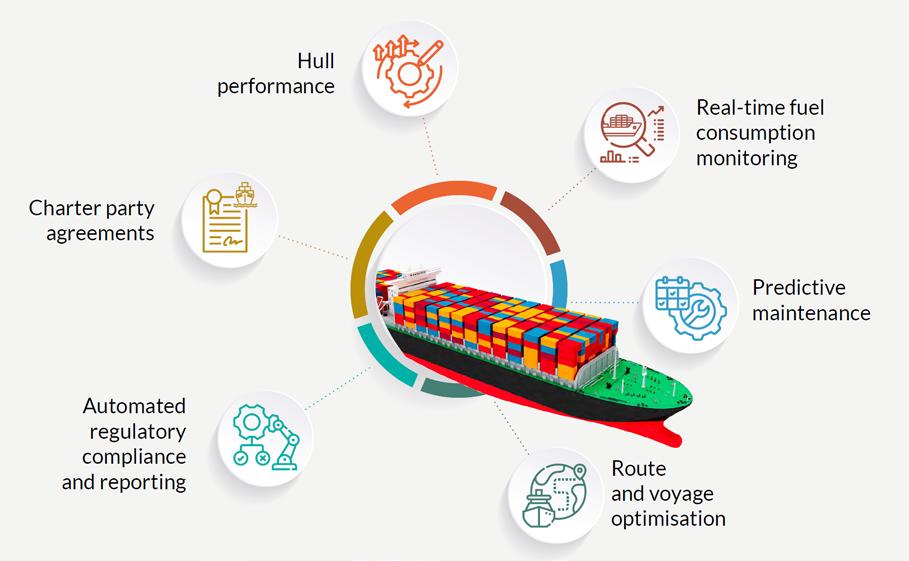

compliance, which is one of the stronger catalysts for the industry’s embrace of digital solutions. With new environmental regulations – like the EU Monitoring, Reporting, and Verification Regulation and its UK equivalent, the IMO Data Collection System, FuelEU, and the EU Emissions Trading System – companies must be able to track and report vessel/fleet emissions data with unprecedented accuracy.
Noon reports, while useful for historical analysis, struggle to provide the level of granularity required for regulatory compliance. HFD, on the other hand, offers continuous emissions monitoring, allowing operators to make proactive adjustments that enhance fuel efficiency and reduce carbon footprints.
Demonstrating the real-word application and impact of HFD, our company launched this spring the Emissions Compliance Module within the Danelec Connect digital ecosystem. It is a cost-effective solution
designed to streamline regulatory reporting; by automating emissions data transfer to class societies and third-party verifiers, the module eliminates the administrative burden associated with reporting. The system not only ensures adherence to regulatory frameworks but also enables shipowners to optimise their emissions performance, identifying inefficiencies and implementing corrective measures in real-time.
The implications of the HFD shift extend far beyond individual vessel performance. As more shipowners embrace digitalisation,
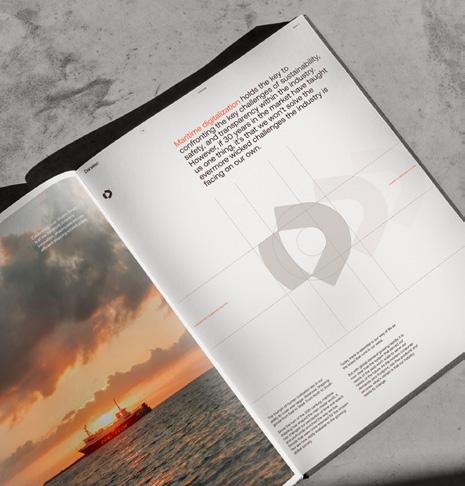
the collective impact on the industry will be significant. Enhanced fleet efficiency, reduced emissions, and improved safety standards will contribute to a more sustainable and competitive global shipping sector. Moreover, as data-sharing practices improve, collaborative analytics may become increasingly valuable, allowing stakeholders across the supply chain to optimise logistics, minimise fuel consumption, and enhance operational predictability. Looking ahead, the maritime industry is poised for a future where real-time data is the norm rather than the exception. While the road to full HFD is long, the speed at which we are travelling is increasing. By providing solutions that accommodate both traditional and modern data strategies, Danelec is guiding the industry through this transition. Shipowners no longer need to choose between legacy systems and cutting-edge technology; with the right partner, they can navigate both worlds fluidly. As shipping continues to evolve in response to environmental and economic pressures, one thing is clear: data will be at the heart of its transformation. Whether through noon reports or real-time analytics, the ability to harness high-quality data will define the success of maritime operations in the years to come. With its commitment to bridging the gap between LFD and HFD, our company is not only advancing digitalisation but also ensuring that every shipowner, regardless of their current technological capabilities, has a route to a smarter, more efficient future.
Danelec is a Danish scale-up operating at the forefront of maritime digitalization. With focus on innovative solutions and technology, the company is transforming maritime operations, and driving efficiency and safety for shipowners and operators worldwide. Onboard data collection incl. VDR and Shaft Power Meters as well as Ship Performance Monitoring and AI-based Analytics for Vessel and Voyage Optimization are Danelec’s key areas of expertise. Visit danelec.com to learn more.

by
Vessel operators are focused on reducing operating risk and achieving compliance with an increasing spectrum of regulations that support safety on board ships. Beyond the baseline requirement, creating the conditions for safety is increasingly reliant on the coordination of multiple sources of data, actions, and responsibilities that result in the desired outcome. Replacing manual systems with a data-driven process and structure can promote a smarter approach to safety as well as to compliance.
This trend is becoming embedded in the maritime industry, with the shift toward goal-based standards that create a higher dependence on data analysis. Regulations employing a risk-based approach, put forth by the International Maritime Organization (IMO), are increasingly reflected in class requirements, providing a clear path away from manual processes to datadriven decision-making.
More than enough to focus the attention
A growing body of regulation and industry guidance emphasizes how to manage risk based on an understanding of conditions. This means adopting a proactive approach that transitions from discrete tasks, with a high and inbuilt risk of failure, to robust, data-driven events. When the safety chain breaks – risk grows. The need is, therefore, for a smarter, stronger process that uses data to join stakeholders
together. This is as true aboard the ship as it is in the fleet management control center.
For example, mooring line safety is not often at the top of one’s mind; rather, like other pieces of equipment, it gains attention when something goes wrong. Samson Rope’s Robin Collett told a recent industry conference that “a typical mooring line break releases the energy equivalent to a two-tonne vehicle hitting a wall at 220 km per hour” – more than enough to focus the attention.
The revision of the SOLAS regulation II-1/3-8 and its associated guidelines by the IMO was undertaken to develop new guidelines for safe mooring operations for all ships in order to prevent unsafe and unhealthy work situations during mooring operations. The amended regulation entered into force on 1 January 2024, together with revised guidance on shipboard towing and mooring equipment. Also published were further guidelines on the design
of mooring arrangements and the selection of appropriate mooring equipment and fittings for safe mooring.
The industry continues to produce material guidance that helps vessel operators manage operational risks. One of the most important factors to consider is the mindset shift of how maintenance of such components is managed and how to get the correct information in front of the right people.
Effective compliance with the IMO rules on safe mooring is just one example. Any rule change or revision that puts a significant compliance burden on a vessel operator needs a solution employing data management to be effective. Data can be used to support practical experience and drive better decision-making. There are, however, limited software options that can manage this process. Our conversations with clients tend to

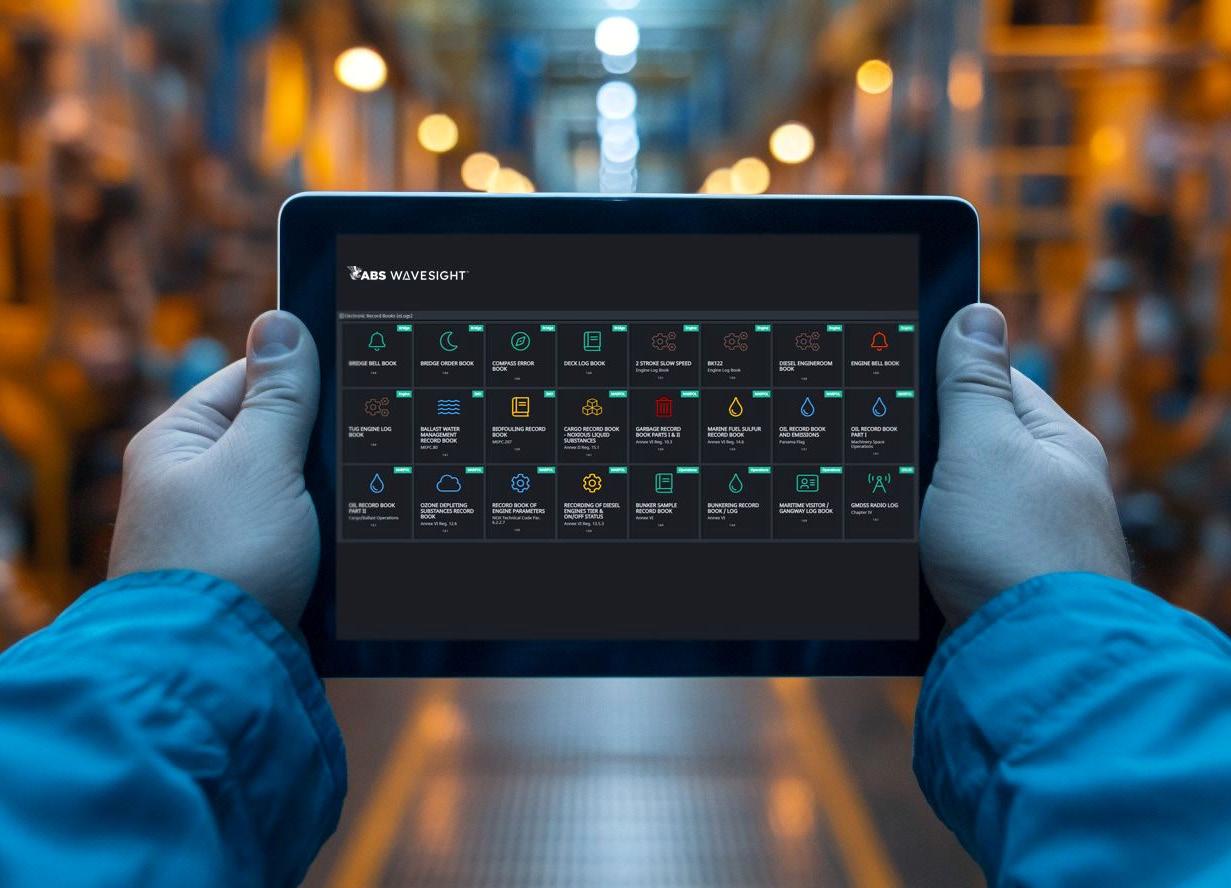
focus on the need to move these problems toward data-driven outcomes that tie into existing fleet management software. As such, a voyage management system should be capable of capturing and reporting enough information to support compliance without increasing risk.
By collecting data on an event-toevent basis, such as mooring or unmooring – including all daily inputs such as weather conditions and likely stress on components that may affect performance – it’s possible to present the operator with a risk-based approach to condition, required maintenance, and likely replacement timescales. Being able to tailor this data can mean that vessel operators have a simpler path to compliance and a clearer view of conditions and the need for intervention. ABS Wavesight’s Nautical Systems software, for instance, can combine the operational reporting features with the technical management need and use workflow automation functionality to direct the required tasks to the responsible vessel team.
With maritime regulations moving progressively away from subjective and prescriptive standards toward a probabilistic, risk-based approach, asset owners, as well as managers and crews, can make better decisions.
In the longer term, the ability to monitor conditions remotely is an enabler of smarter, potentially remote inspection based on real-time equipment quality. The ability to leverage inspection without manual intervention has benefits across the board, providing the conditions of safety are satisfied.
The chances are that many routines of this type are still being managed on spreadsheets. In an era when software can
be leveraged to support safety and compliance in day-to-day maintenance planning, data-driven decision-making makes sense. A condition-based approach means vessel owners and operators can take timely action based on verifiable data. Building process and structure means that technology becomes an enabler for safety and compliance – rather than a complication.
Indeed, the decision not to adopt integrated systems means operators will increasingly struggle to demonstrate compliance with regulations. The opportunity brought by digital transformation is big enough that we have to ask: is the industry doing enough to adopt condition-based methods that enhance safety, or will the regulators have to drive that, one resolution at a time?
The maritime intelligence landscape has become incredibly fragmented, making it difficult to discern credibility. As an independent subsidiary of the American Bureau of Shipping, ABS Wavesight is a SaaS company built on a legacy of maritime and environmental stewardship. Our products are collectively installed on more than 5,000 vessels across the global fleet and are backed by over 160 years of maritime innovation and experience. Sail to abswavesight.com to discover more.

by
The traditional approach to handling health issues in the maritime sector has been reactive, a practice that can negatively impact the unique demands of life at sea. Ship managers and owners can really see their operations impacted when unforeseen health instances occur, and crews must sometimes disembark to seek emergency treatment. In most cases, the shipping company’s priority is, of course, the health and well-being of the seafarer, but there are still financial implications and challenges to navigate to ensure that crew members get the help they need and the vessel remains fully staffed. Fortunately, the latest technological advancements offer opportunities to adopt a more proactive approach – and even prevent the deterioration of health conditions.
There is a clear shift away from reactive healthcare towards a more preventative approach, and the OneCare Group’s (OCG) recent partnership with the artificial intelligence (AI)-powered platform Riverr to provide predictive health intelligence shows how we are dedicated to leading the industry in this new era. Together, we are transforming maritime healthcare, ensuring that the industry can shift from crisis response to preventive wellness, ultimately creating safer, more productive, and healthier environments for all seafarers.
Our recent collaboration will enable OCG to carry out an enhanced pre-employment medical examination (PEME) programme by assisting doctors with datadriven insights during assessments. This innovative tool forecasts risks, such as hypertension and diabetes, empowering medical teams to provide more effective evaluations and personalised care recommendations. Personal health programmes, monitored through our member company, Marine Medical Solutions, ensure continuity of care and health improvement over time.
We can leverage predictive capabilities to analyse crew health patterns, providing early warnings for potential risks. By de-identifying data and incorporating insights into physical health, Riverr supports personalised, early interventions that protect seafarers’ health and well-being. This predictive approach enables early identification of potential conditions, like high blood pressure, diabetes, cardiovascular disease, etc., and by addressing potential risks before they escalate, maritime healthcare is evolving into a proactive and data-driven field. Preventative healthcare improves both crew well-being and operational efficiency, reducing downtime from health emergencies.
Of course, with any technological software, there is the danger of misdiagnosis and errors that we must watch out for. Our teams utilise different tools to try to prevent these instances. For example, we have rigorous training in place where healthcare providers utilising this
platform undergo specialised training to interpret AI-driven insights.
We also carry out continuous audits through our PEME programme, with regular evaluations to ensure consistent quality and reliability. Where we are with AI currently is that we use it to support medical professionals instead of replacing them, so decisions will always be reviewed by experts and challenged where necessary. If our new enhanced PEMEs do pick up any red flags or potential conditions, the process puts the health and safety of the seafarer first while ensuring operational requirements are met. Several measures are then carried out to ensure this. The crew member will undergo further evaluation – a PEME review for a second option. The flagged condition is subjected to additional assessments to confirm the diagnosis and its potential impact on the individual’s ability to perform their duties. Where a seafarer has a manageable condition, we can provide a health plan to monitor and manage the condition while on board. If it is treatable and needs further shore-side attention, the seafarer is


provided with personalised care recommendations to address the issue prior to deployment, ensuring their long-term health and readiness for duty. And then, following treatment, the seafarer undergoes a follow-up evaluation to confirm their fitness for duty.
At OneCare, we provide recommendations and second opinions aimed at maintaining the best possible health conditions for the seafarer. This proactive approach benefits both the seafarer and the shipowner by reducing the risk of preventable medical cases, which, based on OCG’s data, account for up to 25% of onboard incidents. This is a significant amount and shows just how much providing predictive healthcare can help reduce sickness aboard, crew shortages, and incidents that could affect a vessel’s operations. Shipowners and managers are saving money by investing in their crews’ health before they even step on board.
While the final decision regarding the seafarer’s appointment ultimately rests with the ship manager/owner, it’s
important to note that just because a condition is flagged up, it does not mean that the person is unable to start working on the vessel. It acts as an advisory and preventative measure that, if left untreated and unrecognised, may well end up causing further issues for the seafarers or owner or manager further down the line. A lot of the conditions flagged are easily treatable and kept in check while they are on board.
As AI further develops and we learn more about it, we anticipate our platform with Riverr will expand with more capabilities. We hope we’ll be able to have greater accuracy in forecasting health
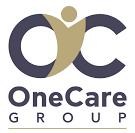
risks, enabling personalised health interventions; integration with wearable devices for continuous data analysis and immediate response to anomalies; enhanced AI diagnostics integrated with virtual consultations to improve access to care; and tools to detect early signs of mental health challenges, offering timely support.
This ongoing development will strengthen our ability to deliver holistic, forward-thinking healthcare solutions for maritime workers. This move towards preventative healthcare can only benefit our crews and the sustainability of shipping in the future. We can attract more people into the industry with better healthcare and fewer roadblocks when it comes to the ongoing operations of vessels.
The OneCare Group is an enduring global entity that strives to improve seafarers’ health, well-being & e-learning through a strong network of specialists who are committed towards this aspiration. Among others, we offer an integrated global remote medical advisory management solution aiming to improve seafarers’ health and well-being through direct 24/7 access to medical expertise, while ensuring financial and operational efficiencies for shipowners & managers. Visit onecaregroup.global to discover more.


Overview of products, infrastructure, Overview of products, infrastructure, services, and many more greenstuff services, and many more greenstuff in one place – on your wall, in one place – on your wall, computer, or phone! Plus the digital computer, or phone! Plus the digital BALTIC GREEN MAP BALTIC GREEN MAP CATALOGUE with plenty of CATALOGUE with plenty of wholesome details! details!

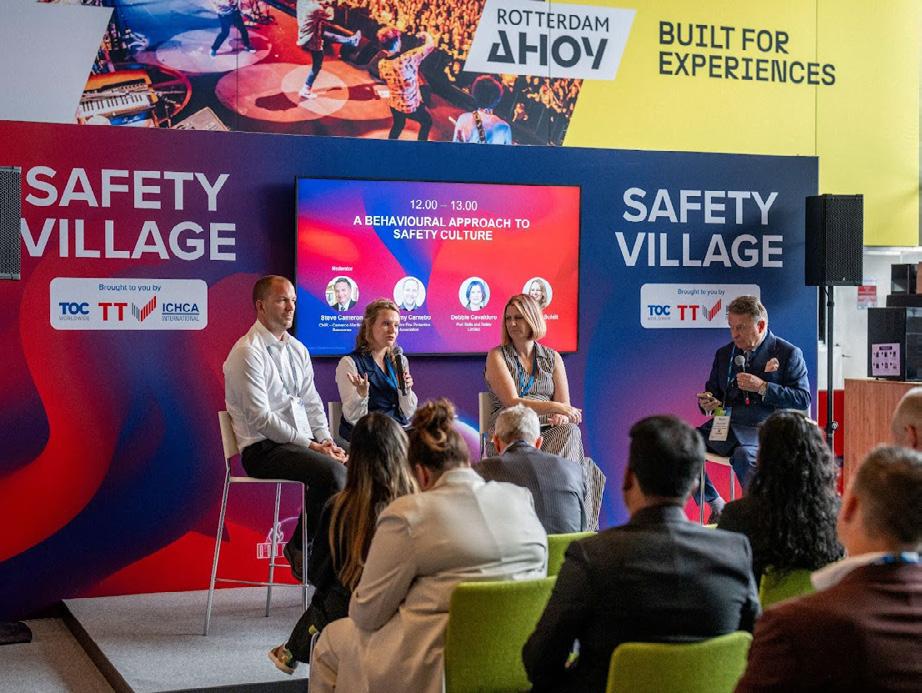
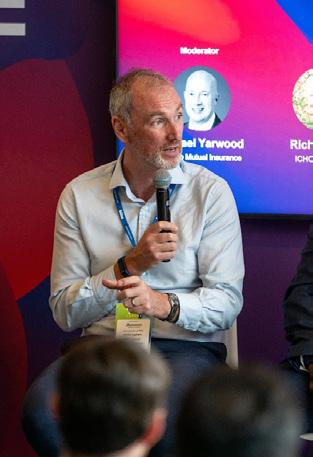




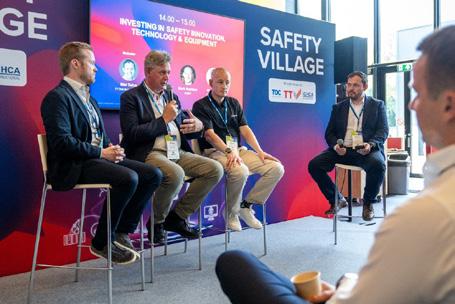
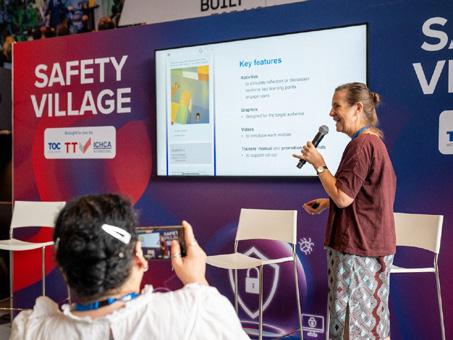
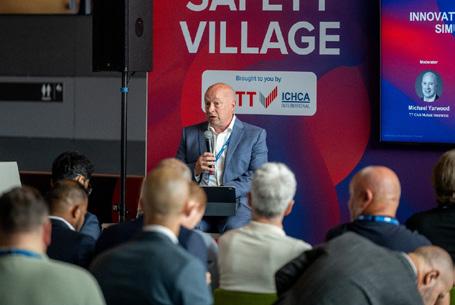

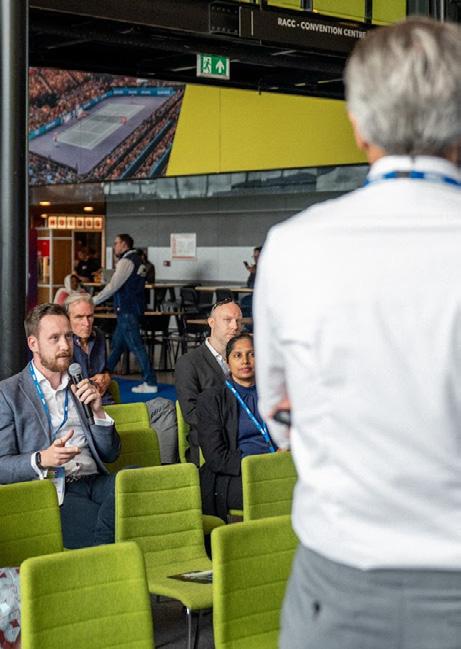

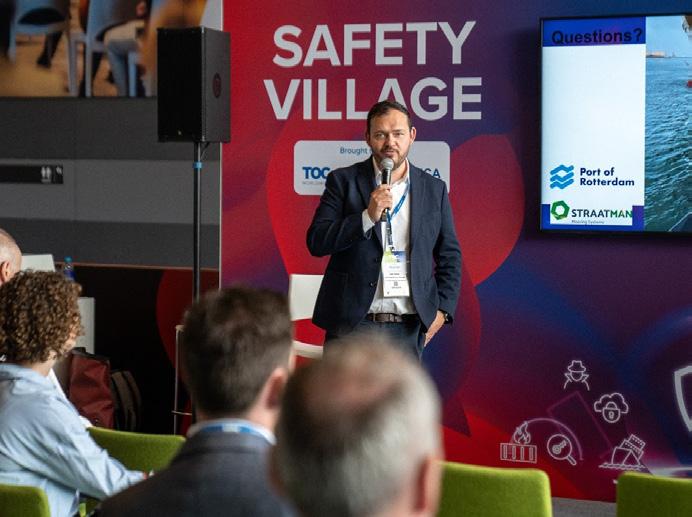
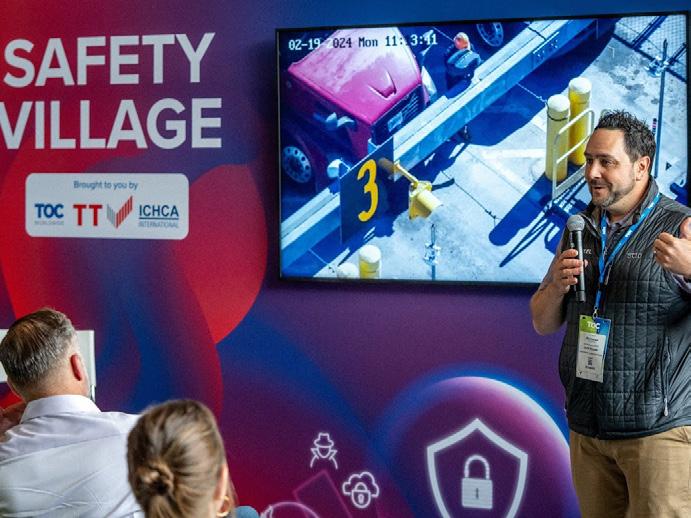
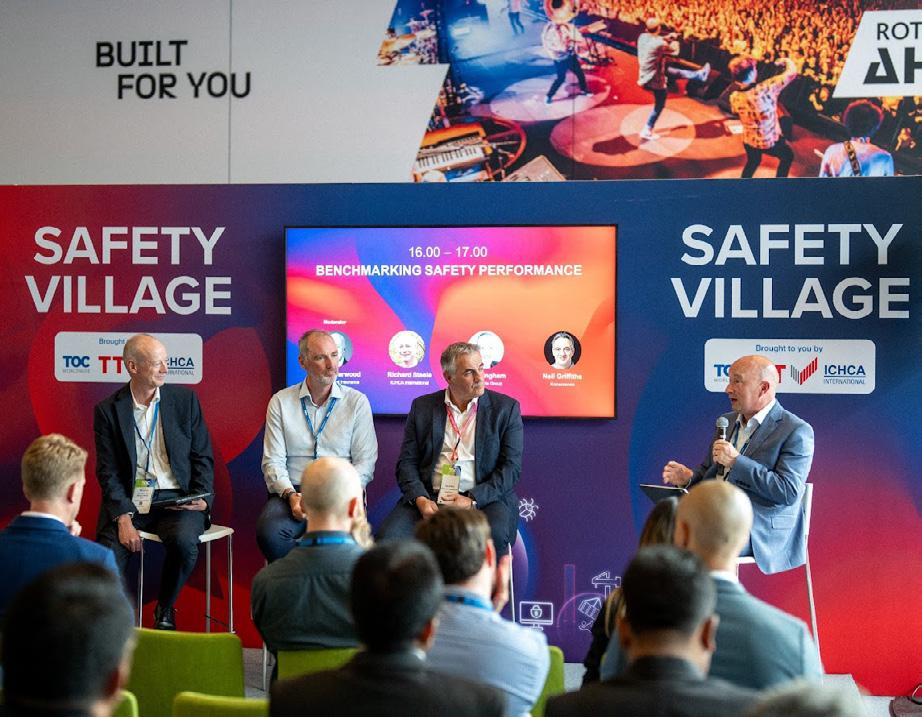
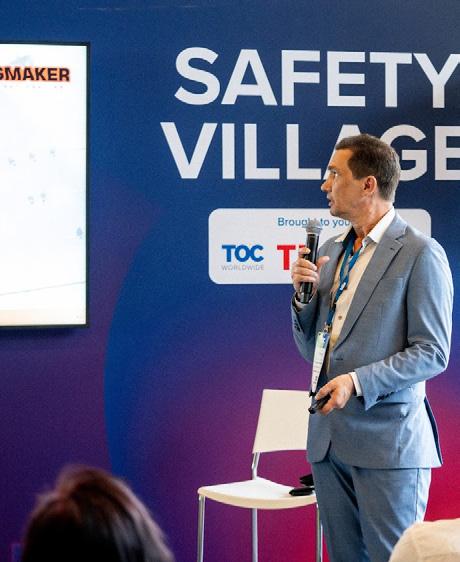
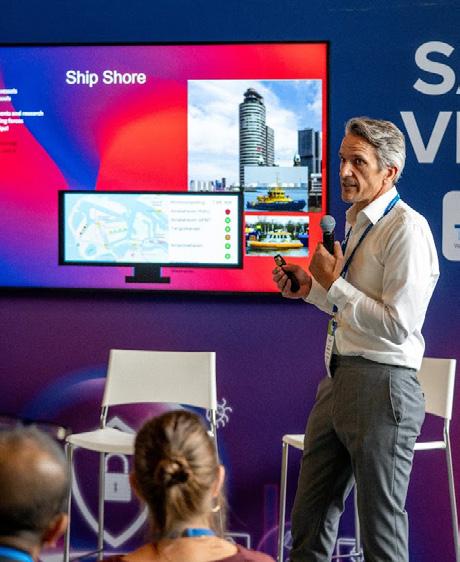

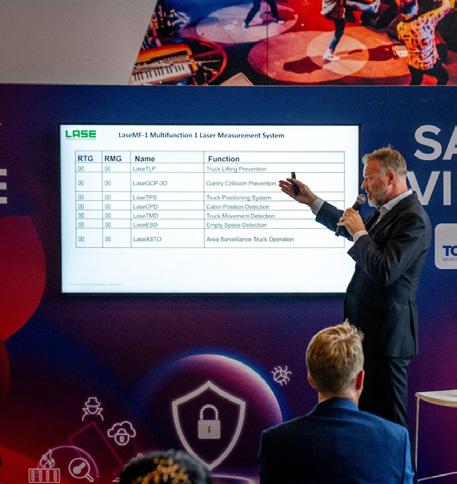
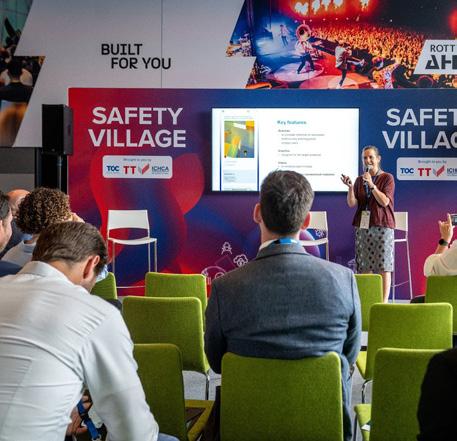

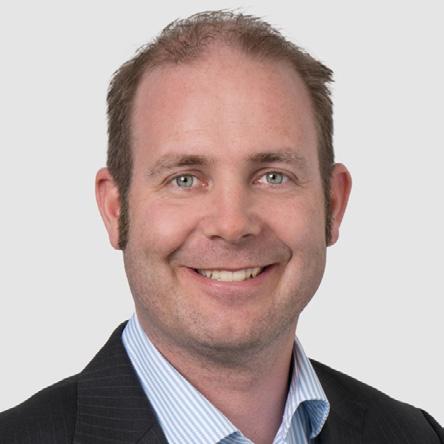
NORBERT KLETTNER Managing Director RBS EMEA
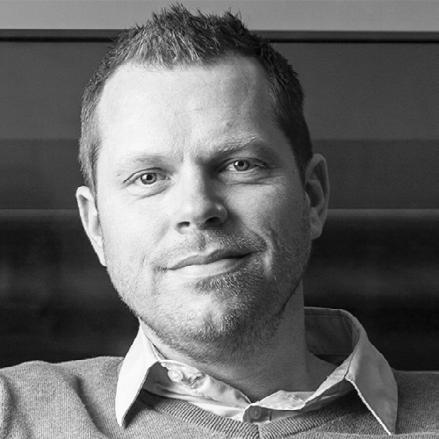
How do you like this year’s edition of TOC Europe?
The show this year was very busy with a good mix of people and companies that are expected and have always been here, with new startup companies and a set of "young blood.” So, I enjoyed the show, and we had a lot of fruitful discussions with existing customers, possible future customers and partners. It has been very clear that high-quality data and digitalisation have become more and more visible, and terminals have started actively asking for it. Being a founding member of TIC4.0 as RBS and the Vice-President, this is good to see because it means we set the right path when we started that. Data is one of the future foundations of the industry.
How, from your perspective, does the current market situation look?
The industry is increasingly embarking on its automation and digital journey on a wider scale. More and more terminals are going down at least one of these paths. This triggers a lot of new developments and demand in the market for quality digital solutions such as our TOPS Intelligence 3D. However, there still is the global uncertainty with geopolitical changes and unrest. This put the long-term development in limbo. But the industry itself has seen some positive push, e.g., with the establishment of the Gemini alliance, which has reshuffled quite a bit of cargo flow.
What new solutions/products have you presented to your customers this year?
We have presented new upgrades of our TOS TOPS Expert together with the TOPX Intelligence 3D module as the overall AI and optimisation engine. So, we have been advancing on our core TOS with new features from more graphical equipment screens to better data integration using TIC4.0 and working on the new General Cargo module. The additional module TOPX Intelligence will continue to be the future core engine to enable the terminals to work with the ever-growing amount of data.
We're very pleased with this year's edition of TOC Europe," says Fredrik Rosén, Business Line Manager for Material Handling from Dafo Vehicle. "The turnout has been strong, and we've had many valuable meetings with representatives from across the port industry. It's clear that safety and operational continuity remain top priorities for our customers, which aligns perfectly with the solutions we offer."
One of the key highlights at this year's event has been Dafo Vehicle's EV fire safety solutions, which attracted significant interest. "We're investing heavily in this area, as the transition to electric vehicles brings both opportunities and new safety challenges to address.”
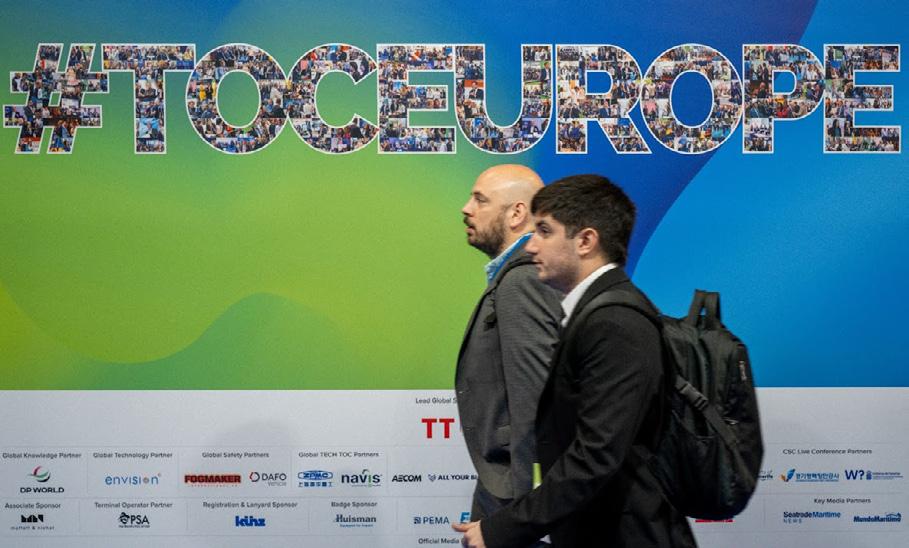

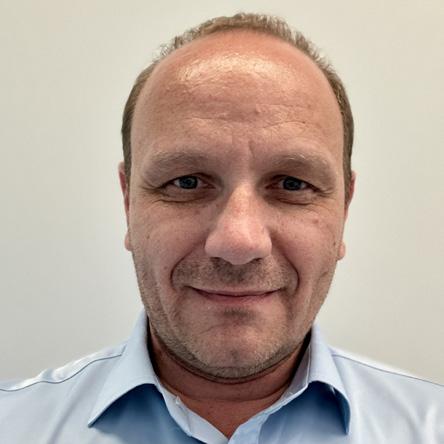
ANDREA VIRONE
How do you like this year’s edition of TOC Europe?
TOC Europe is always very interesting — a great opportunity to reconnect with people in the industry and gain new contacts and potential clients.
How, from your perspective, does the current market situation look?
The current market situation is very complex due to the changing tariffs policy imposed by the United States, which can affect trade and, consequently, the willingness of container terminals to invest.
What new solutions/products have you presented to your customers this year?
The technological trend in container terminals is moving toward automation of container handling and/or remote control of cranes. We have developed a complete range of high-performance cables with fibre optics to support automation and to best serve the latest generation of cranes, which are more advanced, faster, and highly interconnected.

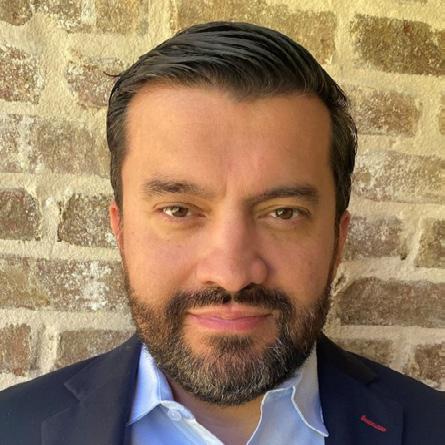
JULIAN GALVIS VP of Sales and Marketing TIDEWORKS TECHNOLOGY
How do you like this year’s edition of TOC Europe?
TOC Europe is always a fantastic venue to meet our customers and industry partners and stay in tune with market trends. As a longtime attendee and exhibitor, I thought this year's event was successful, and I'm excited to see it head to Hamburg in 2026.
How, from your perspective, does the current market situation look?
There's momentum in digital transformation, but many terminals still face friction from disconnected systems and manual processes. According to our recent global surveys, 86% of intermodal terminals use a TOS, yet only 27% access real-time analytics. Among marine terminals, over 55% still rely on spreadsheets, with yard utilisation, gate operations, and lack of real-time visibility cited as top pain points.
The focus now is on simplifying operations, improving visibility, and shifting from rigid tools to flexible, data-driven platforms that empower operators. The need for smarter, more connected solutions is clear.
What new solutions/products have you presented to your customers this year?
Tideworks is focused on delivering practical, impactful solutions for the everyday terminal – tools that evolve with our customers' needs. Right now, a major focus is data: we're investing heavily in accurate, real-time, and accessible information so terminals can extend their core TOS into critical systems and leverage AI and other emerging technologies in meaningful ways.
Data alone isn't enough – usability and flexibility need to follow. That's where Tideworks is leading the shift, delivering connected, intelligent systems that simplify complexity and give terminals more control. Our extensibility approach empowers customers to build, integrate, or extend their systems on their terms, enabling longterm transformation through adaptability and partnership.


STEPHAN PIWORUS Co-Founder and CEO ZENZE
How do you like this year's edition of TOC Europe?
As always, it was a great event with familiar faces, strong content and some exciting new developments. I only wish I had planned a bit more time to connect with everyone I wanted to meet. I'm especially happy that next year's TOC will be in my hometown, Hamburg. A great choice, and I'm sure Hamburg will be a fantastic host. A true home-field advantage.
How, from your perspective, does the current market situation look?
It's fascinating how fast things are moving. Startups like Conroo are tackling long-standing pain points, like integrating external truck drivers via a great app. There's also strong momentum around AI, and increasingly, electrification, with new players entering from other industries. I also had the impression that more terminal operators attended this year, reflecting the growing interest and urgency in the market. Interestingly, I also had a few initial conversations around funding and investment, showing that innovation in this space is gaining broader attention.
What new solutions/products have you presented to your customers this year?
For me, it was fantastic to receive such positive feedback on the Cargo Visibility Network. Especially encouraging was the openness of both terminal operators and suppliers to actively contribute to it. LoRaWAN is still not widely adopted in the supply chain – or even at terminals – but it's becoming clear that this will change rapidly over the next few years. IoT has never been more accessible!
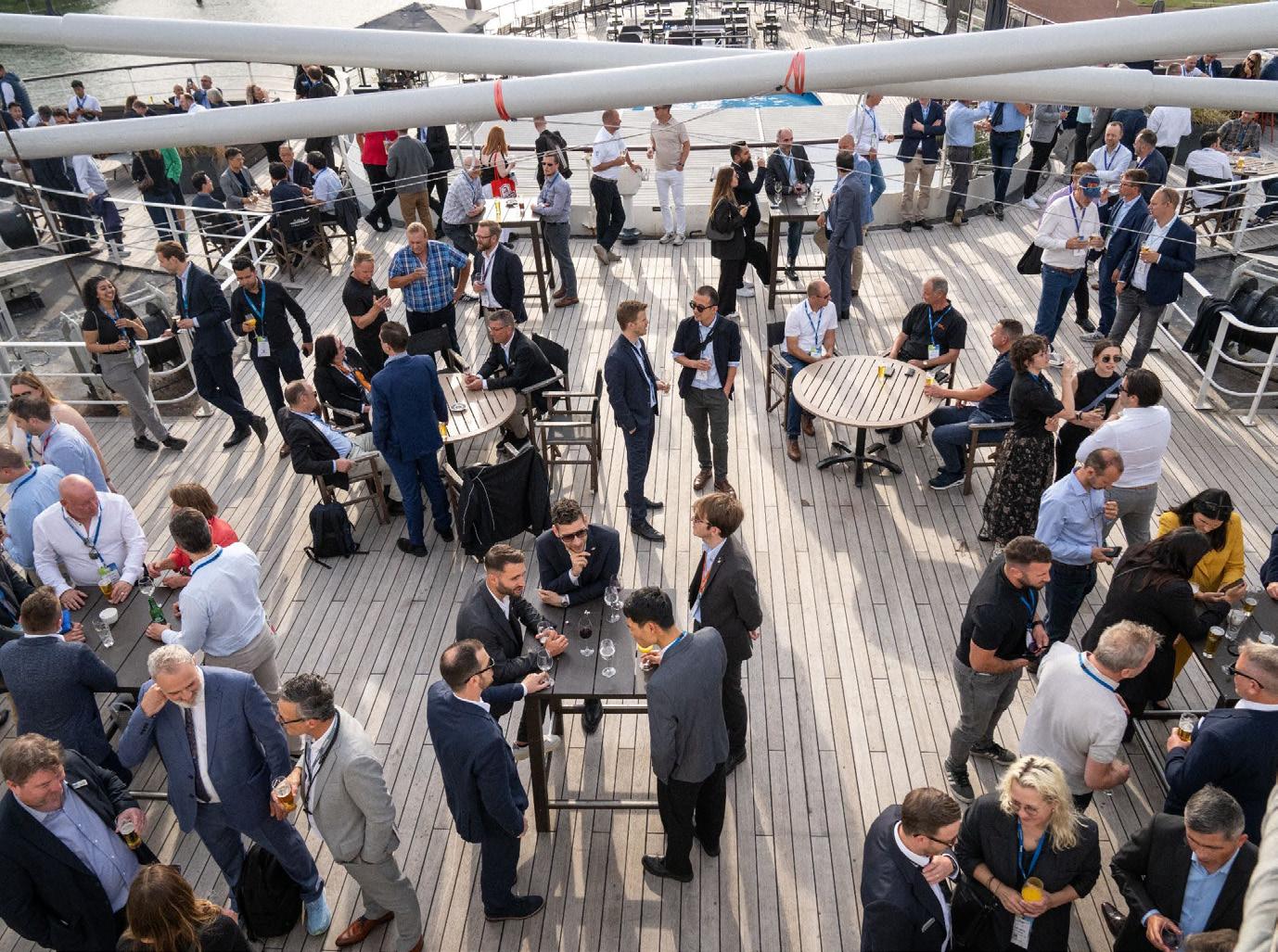

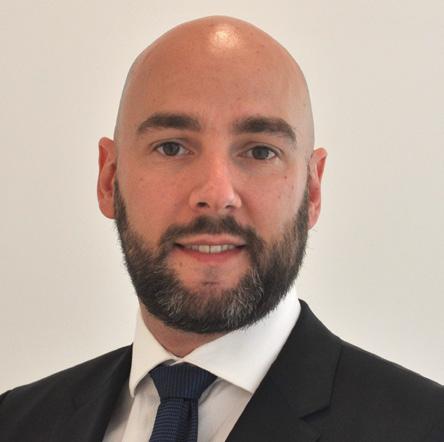
VP Product Management
How do you like this year’s edition of TOC Europe?
A successful edition, with, as always, highly relevant exhibitors and visitors. TOC Europe continues to be a key platform for connecting with industry leaders and showcasing cutting-edge solutions.
How, from your perspective, does the current market situation look?
Despite ongoing challenges, we see growing momentum in the electrification and automation of ports, driven by increasing regulatory pressure and sustainability goals. The market is clearly looking for reliable, future-ready solutions that can accelerate this transition.
What new solutions/products have you presented to your customers this year?
This year, we introduced two innovative solutions designed to support the decarbonisation and electrification of ports and terminals:
1. PowerAlign – a groundbreaking, flexible, and compact shore power system for container terminals. Its key feature is a movable socket box that aligns with the ship’s shore power inlet, ensuring efficient and safe connection with minimal installation effort.
2. MCS Manual Dispenser – an award-winning, manually operated plug-in solution designed to charge electric trucks and vessels. This compact and user-friendly system delivers up to 4.5 MW of power, making charging highly effective. It allows port and terminal operators to optimise both their e-vehicle fleet size and operational efficiency.
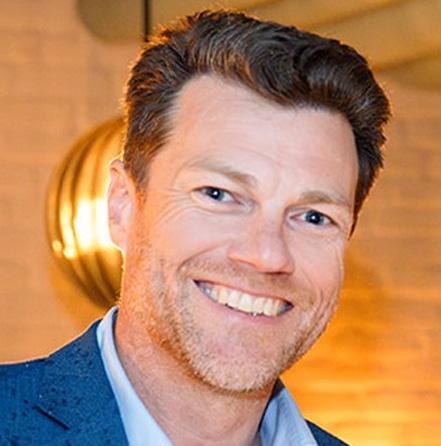
General Manager
How do you like this year's edition of TOC Europe?
TOC Europe was again a real success for us! We had meaningful conversations that deepened our understanding of customer needs. These exchanges confirmed we are on the right track and inspired new product features and application areas. What we value most is the unique atmosphere – a place to reconnect with customers, meet new contacts, and exchange ideas with longtime industry partners. It almost feels like coming together with extended family each year – just with more cranes and fewer grilled sausages.
How, from your perspective, does the current market situation look?
We see a growing demand for practical safety and efficiency solutions. Our system helps terminals make interactions between people and machines safer and more reliable, while also reducing downtime and supporting more flexible operations. In Europe, safety certification is a key concern – one we are actively addressing. Our goal is to meet both operational and regulatory expectations.
What new solutions/products have you presented to your customers this year?
Our Mi-Star solution continues to evolve. This year, we introduced a new level of sensor fusion that improves tracking accuracy and adds redundancy. Real-time monitoring and predictive maintenance functions were also enhanced. These updates are based directly on user feedback. Events like TOC are essential for this – every conversation helps us improve and align the solution with real-world needs.



How do you like this year’s edition of TOC Europe?
From a business development perspective, this year’s edition clearly surpassed the previous one. It was a high-impact event, with strong and consistent traffic to our booth, as well as deeper engagement through the event app. What stood out most was the level of recognition that Avlino has gained. We’re now seeing the results of that journey, with qualified leads actively seeking us out, a clear sign of growing market awareness.
How, from your perspective, does the current market situation look?
The industry is navigating a period of significant geopolitical disruption, from shifting trade policies and realigned global alliances to conflicts and crises that are redefining maritime routes. These dynamics are introducing volatility and uncertainty across global supply chains. What’s becoming evident is a shift in mindset: the sector is beginning to move beyond traditional conservatism and increasingly embracing technology as a strategic asset. Terminals are looking for ways to respond with agility, accelerating performance when required, and optimising costs when conditions demand it. While the environment is undoubtedly complex, it is also rich with opportunity for those prepared to adapt.
What new solutions/products have you presented to your customers this year?
At TOC Europe, Avlino presented the PortLink Solutions Suite, a 3-O System rooted in the concept of intent-driven optimisation. Rather than focusing solely on feature sets, PortLink is designed to align operational execution with evolving business objectives in real time.
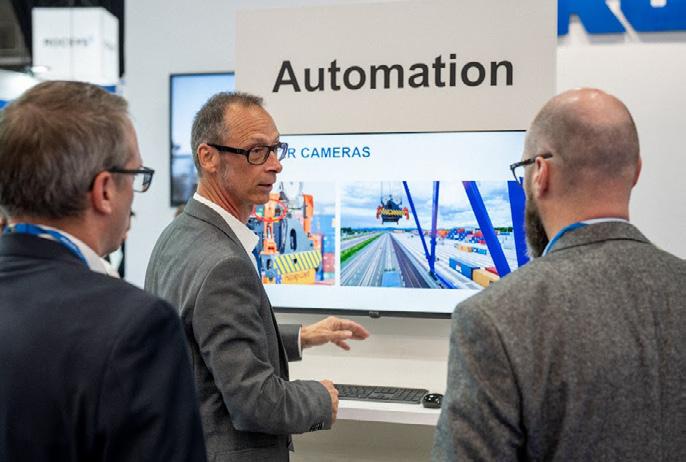
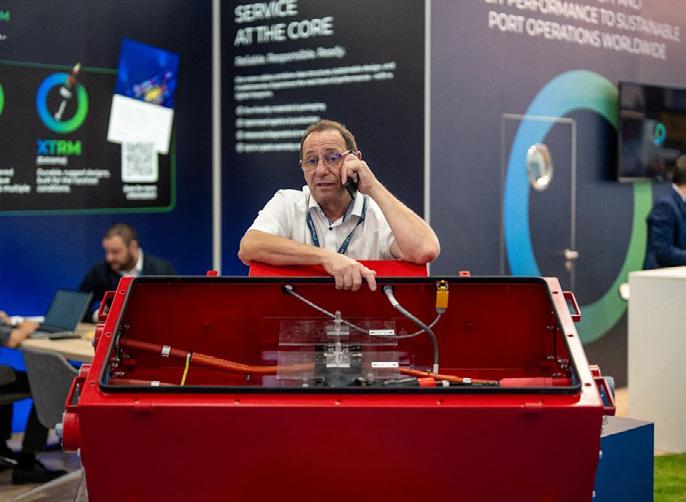

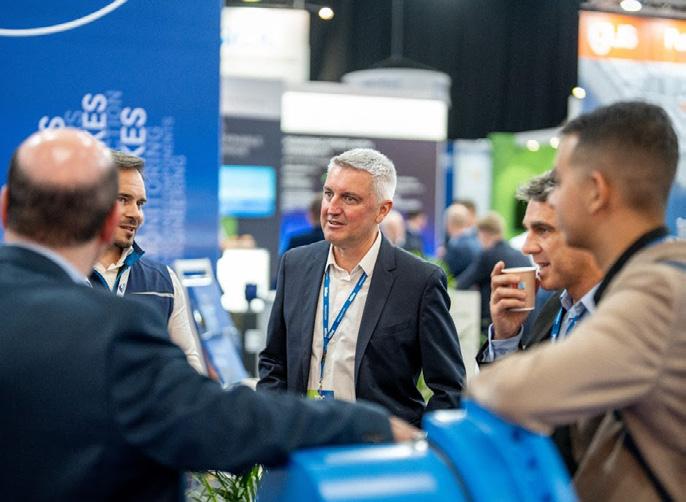

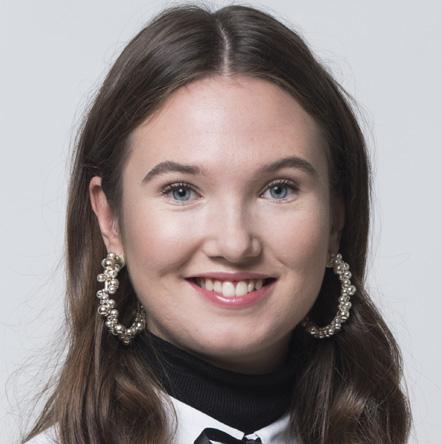
Marketing & Communication Director SFPORTEQ
How do you like this year’s edition of TOC Europe?
This year’s TOC Europe once again delivered an outstanding experience, bringing together key players from across the industry to exchange ideas and explore the future of container handling. The atmosphere was vibrant and forward-looking, with a strong emphasis on innovation and sustainability. For us at sfPORTEQ, it was a valuable opportunity to connect with partners and customers and to showcase how our solutions continue to evolve in response to industry needs.
How, from your perspective, does the current market situation look?
The market is currently navigating a dynamic landscape shaped by both technological advancement and environmental responsibility. There is a clear shift towards smarter, more sustainable operations, and we see increasing demand for equipment that supports these goals. At sfPORTEQ, we are focused on delivering solutions that combine reliability with low environmental impact. Our lightweight, lowmaintenance spreaders are designed to optimise performance while supporting the industry's transition to greener practices.
What new solutions/products have you presented to your customers this year?
This year, we highlighted our continued commitment to innovation and sustainability. While our SHRP & SHRP+ Single Hydraulic Piggyback spreaders remain a key part of our offering, we also showcased enhancements across our entire product range. Our focus was on presenting solutions that not only improve operational efficiency but also contribute to a more sustainable future for container handling.
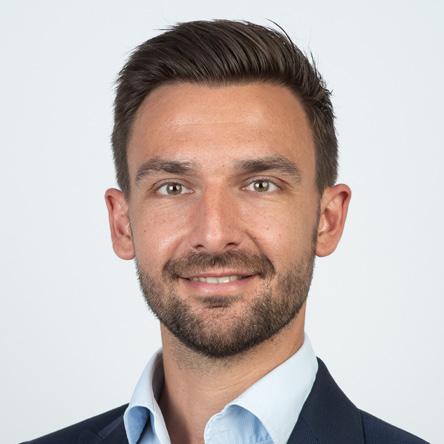
ANDREAS KYRTATOS CEO EMBOTECH AG
How do you like this year's edition of TOC Europe?
TOC Europe, as every year, is the meeting point for those driving progress in the port industry. Conversations this year were anchored in practical challenges, not hype. What stood out was the clear shift from exploratory discussions to implementation-focused conversations. There's growing clarity around what autonomy can – and cannot – solve, which makes for sharper dialogues and more concrete collaboration. Personally, it was good to meet both long-standing partners as well as new players actively shaping the next chapter of port logistics.
How, from your perspective, does the current market situation look?
The momentum is real. Ports are under pressure to increase throughput, reduce emissions, and improve predictability – without redesigning their infrastructure. That's where autonomous trucks can make a tangible impact. We see a strong pull from operators looking for practical automation solutions that work with today's equipment and can be expanded zone by zone. Our job is to deliver that reliability at scale, and we're doing it with trusted partners on site.
What's encouraging is that market expectations are maturing. There is less talk about autonomy as a distant goal and more about making it work in the next budget cycle. That shift makes sense—and it plays to our strengths, as we provide autonomous solutions built to deliver.
What new solutions/products have you presented to your customers this year?
Our Autonomous Terminal Truck (ATT) solution, now being deployed at APM Terminals Maasvlakte II, took centre stage. What sets our solution apart is our experience from years of live deployments and a uniquely flexible system that can handle real-world conditions – weather, traffic, mixed fleets.

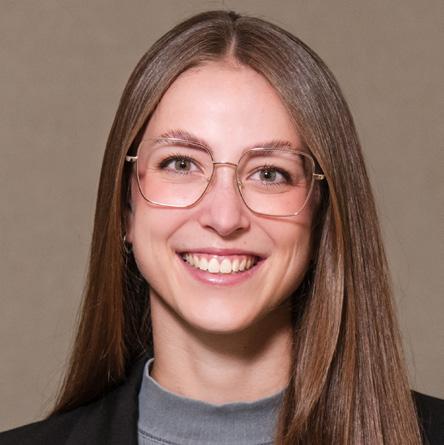
How do you like this year's edition of TOC Europe?
We truly enjoyed this year's TOC Europe in Rotterdam. The event once again proved to be an essential platform for connecting with industry experts, customers, and decision-makers. Our booth was a busy meeting point with many inspiring and in-depth conversations that reflected the industry's current mindset. Events like TOC are not only about showcasing technology, but they are also about engaging in meaningful dialogue and exchanging perspectives that shape the future of terminal operations.
How, from your perspective, does the current market situation look?
It's clear that we are operating in turbulent times. Disruptions, whether geopolitical, environmental, or technological, have become the new normal. What stood out at TOC is how this atmosphere drives a shared sense of urgency to act. There's a strong focus on optimisation as terminal operators aim to do more with existing resources. We see a noticeable shift toward modular, AI-powered solutions to meet growing demands with flexibility and efficiency.
What new solutions/products have you presented to your customers this year?
We believe innovation isn't always about reinventing but about refining what works. At TOC, we focused on our proven suite of optimisation modules that evolve and adapt to the needs of modern terminal operations. Designed to work as microservices on top of existing TOS or legacy systems, these solutions help terminals unlock greater efficiency and resilience without major infrastructure changes. As early adopters of AI and Machine Learning, our priority has always been to deliver reliable, future-ready technology that creates lasting value.

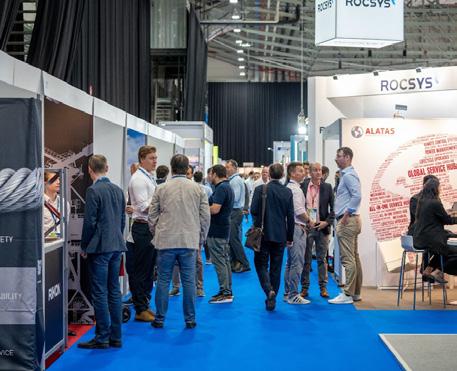
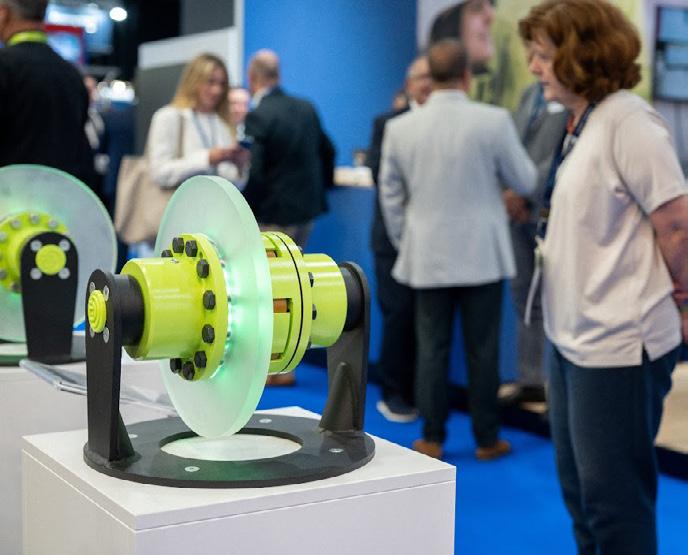

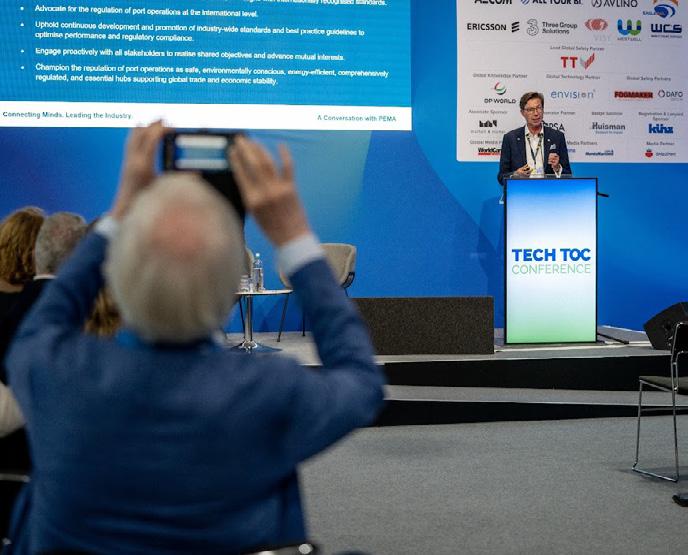

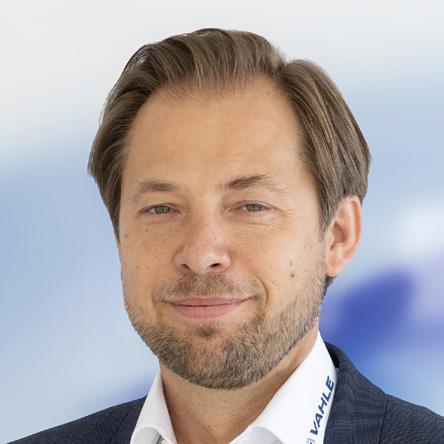
How do you like this year's edition of TOC Europe?
TOC once again proved to be the key meeting point for the global port industry – almost like a family gathering. What stood out this year was the heightened focus on sustainability, likewise the evolution of port operations. Discussions were more targeted, and many visitors came with concrete ideas and projects. That shows us: the industry is ready to move from talk to handle.
How, from your perspective, does the current market situation look?
The market is in the midst of a fundamental transformation. Decarbonisation and digitalisation are no longer optional or nice-to-have: they are strategic imperatives.
We identified these trends years ago and have consistently aligned our development accordingly. Now, it is finally being put into practice across the industry. Terminal operators are under growing pressure to modernise their infrastructure sustainably while maintaining high availability. This drives demand for reliable, efficient, and intelligent system solutions.
It is a fact that emission-free and fully automated infrastructures are no longer side effects of operating cost-efficiency; they are the foundation, where seamless energy and data transmission are key success factors.
What new solutions/products have you presented to your customers this year?
We showcased our Trimotion Compact System , our latest solution for the full electrification and automation of RTG cranes. It enables remote-controlled operations and can be easily retrofitted into existing terminals. We also presented our Green Port Solutions , including battery storage systems for emission-free crane operation and scalable smart charging solutions for electric truck fleets.
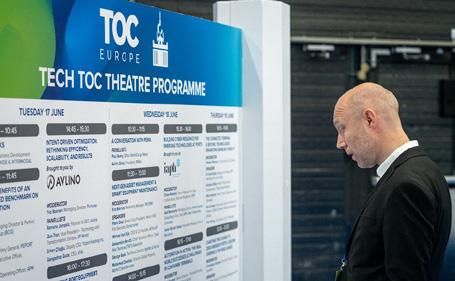
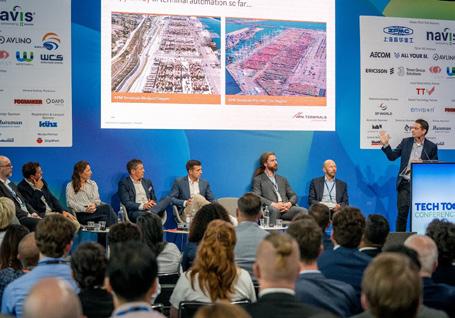
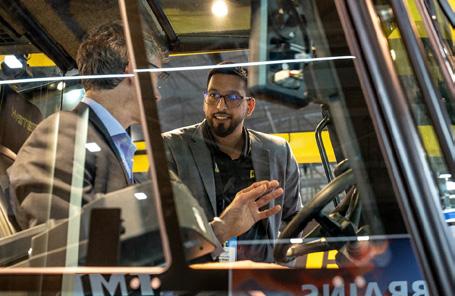

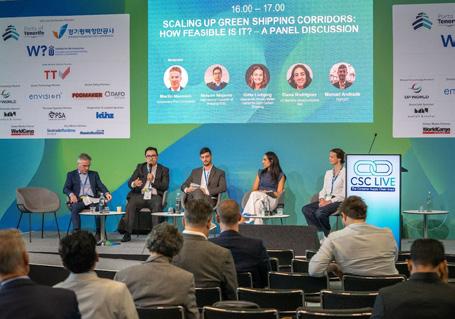

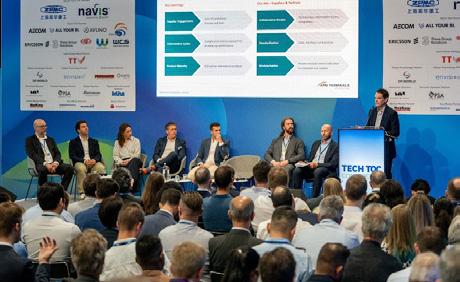

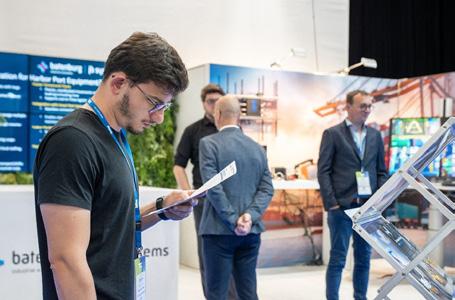

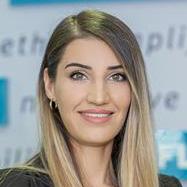
KARATAŞ Sales & BD Manager
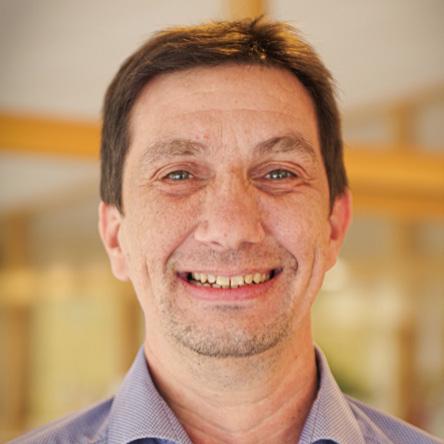
FREDRIK RÖNNQVIST
Key Account Manager and Segment Manager: Material Handling FOGMAKER
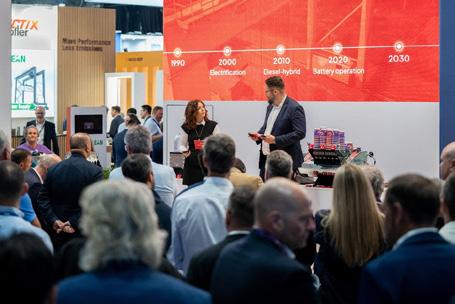
How do you like this year‘s edition of TOC Europe?
This year’s TOC Europe was a great experience for us. It brought together so many key players from the industry and created the perfect space for real conversations, fresh ideas, and new connections. We had the chance to catch up with partners, meet new people, and share what we’ve been working on. Events like TOC are always a good reminder of how fast the industry is evolving and how important it is to stay connected and keep up with the latest innovations.
How, from your perspective, does the current market situation look?
The market is clearly navigating a period of transformation. We see increased pressure on terminals and logistics providers to enhance efficiency, reduce costs, and embrace digitalisation. Sustainability, automation, and data-driven decisionmaking are no longer trends but core priorities. While the global context presents challenges, it also opens doors for innovative solutions to take centre stage.
What new solutions/products have you presented to your customers this year?
We used TOC Europe as a chance to highlight how GullsEye continues to grow in line with our customers’ evolving needs. Digitalisation remains a key focus for us, and we’re constantly enhancing our platform to support more efficient, transparent, and data-driven port operations. From improved planning tools to real-time visibility and automation features, our solutions help terminals streamline operations, respond quickly to challenges, and stay competitive in a fast-changing industry.
How do you like this year's edition of TOC Europe?
It was great as always. We met many friends and industry colleagues, made new acquaintances, and had the chance to discuss ongoing and upcoming projects. Fogmaker participates in three out of four TOC events, and we are the global safety sponsor. We were also given the chance by the organisers to hold a presentation on fire safety in ports.
How, from your perspective, does the current market situation look?
Fogmaker sees great potential, and we are gaining market shares around the world. The industry has an increasing focus on safety and an increased awareness of the consequences of something going wrong. We have started many new cooperations and are optimistic about the future.
What new solutions/products have you presented to your customers this year?
Our focus has been to highlight our eco-friendly suppressant liquid, Eco 1, which is being introduced around the world. The environmental footprint of Fogmaker has been an integrated part of our business model for a long time, and even though our old liquid only has trace amounts of PFAS, phasing it out is an important and necessary goal.



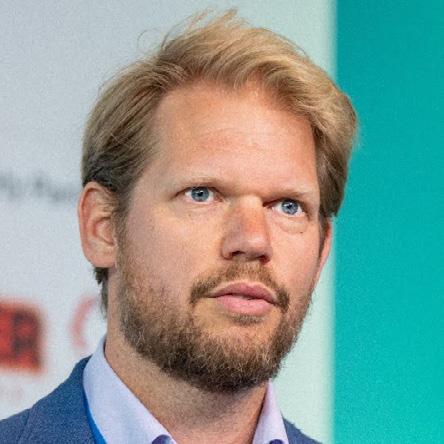
SJOERD DE JAGER
Managing Director & Co-Founder PORTXCHANGE
How do you like this year’s edition of TOC Europe?
Again, a great gathering of solution providers, shipping lines, and some port authorities. Very interesting presentations and panels – especially on decarbonisation and digitalisation. I liked the format, with the GSC conference being separate from the exhibition space, a lot – more focus.
How, from your perspective, does the current market situation look?
Volatile – many transitions are ongoing in parallel, and a lot of trade-related uncertainty – these are choppy waters to navigate. I think we haven’t seen the worst yet, as trade wars continue, real wars spread, and the sector has not found an answer yet on how to decarbonise faster to avoid painful penalties.
What new solutions/products have you presented to your customers this year?
No new solutions, but a different narrative: ports and shipping companies should start to ask the hard questions about their business and business models, because even if we implement all the policies today, worldwide, simultaneously and have them into perpetuity, we won’t make the net-zero target. So, we should talk about making the cost of free shipping when shopping transparent, talk about going nuclear for deep-sea, and reducing cruise.
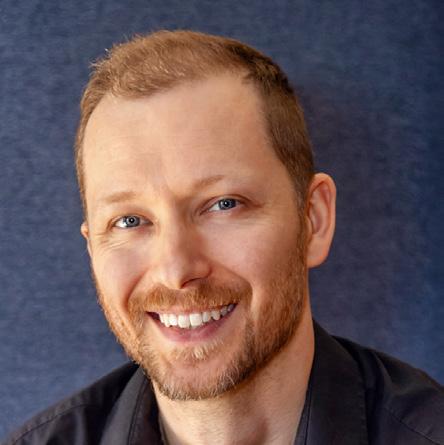
How did you like this year's edition of TOC Europe?
TOC Europe was, as always, a highlight of the year. The energetic atmosphere at the Ahoy Centre fostered engaging conversations and significant interest in our simulators. It was incredibly informative to hear from industry leaders and experts on the latest developments during the speaker sessions. Networking with other exhibitors was also a valuable aspect, reinforcing our belief that TOC is the place to be for potential vendor collaborations and meeting prospective clients.
How, from your perspective, does the current market situation look?
We’re seeing a clear push towards digitalisation and remote operations. More and more ports are looking to integrate a simulation component into their training programs. Some use a simulation training system to optimise current processes, others to support trainee upskilling, such as a shift to remote operations. In both cases, data and training management tools are becoming essential, as instructors seek clear metrics to track operator performance over time.
What new solutions/products have you presented to your customers this year?
This year, our top release was our new Remote Operating Station (ROS) and accompanying Remotely Operated Rubber-Tired Gantry (ROS RTG) Training Pack. It’s designed to help ports train new and experienced operators, preparing them for the transition to remote operations. It can even be used ahead of equipment deployment to reduce dips in productivity during the transition. The exercises in our training pack start at the beginner level, progressing in difficulty to more advanced operations. The training pack is also fully compatible with our Intellia Instructor training management tool, allowing instructors to set custom learning paths, mass export data at the touch of a button, and monitor student performance metrics over time. The multiscreen ROS was developed in collaboration with industry-leading controls manufacturer Spohn + Burkhardt.

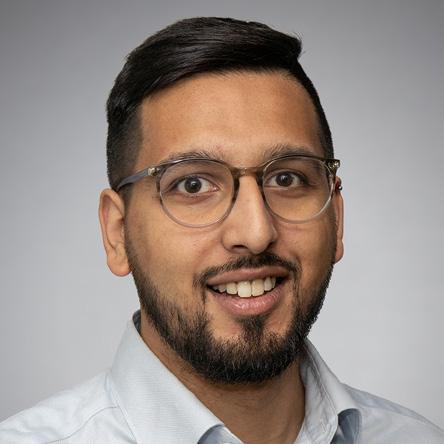
How do you like this year’s edition of TOC Europe?
At TOC Europe 2025, we learnt a lot and enjoyed introducing so many ports and terminals to tough solutions to help them achieve their objectives around cost, productivity, and sustainability. We gave ports and terminal operations an opportunity to discover how electrification can help them to significantly reduce the environmental impact of their operations.
How, from your perspective, does the current market situation look?
Momentum keeps growing for port electrification, whether driven by corporate initiatives or government targets. These deadlines aren’t immediate, but shifting away from the ICE technology that operations have depended on for quite some time requires taking a deliberate, thorough approach and doing your homework. Container shipping overcapacity is also pinching both margins and space for ports and terminals. With greater demand for shipping, there is also a higher throughput to deal with. Although some larger terminals are exploring more crane handling to deal with volumes, we also see more smaller ‘hub’ terminals appearing in some regions to help keep goods flowing. However, dependability and durability of equipment remain a high priority when selecting container handling equipment.
What new solutions/products have you presented to your customers this year?
We highlighted scalable power for high-capacity equipment at TOC Europe. Alongside the newest electric forklift model, we also showed our diesel-powered counterpart. Both the electric and diesel models feature comparable benefits in terms of visibility, performance, and modularity.
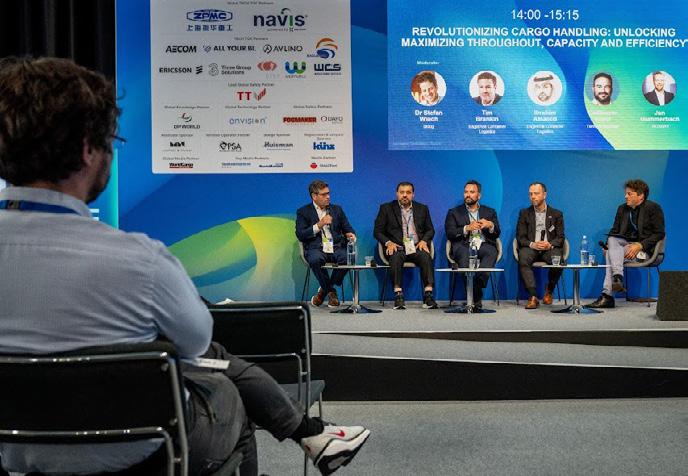

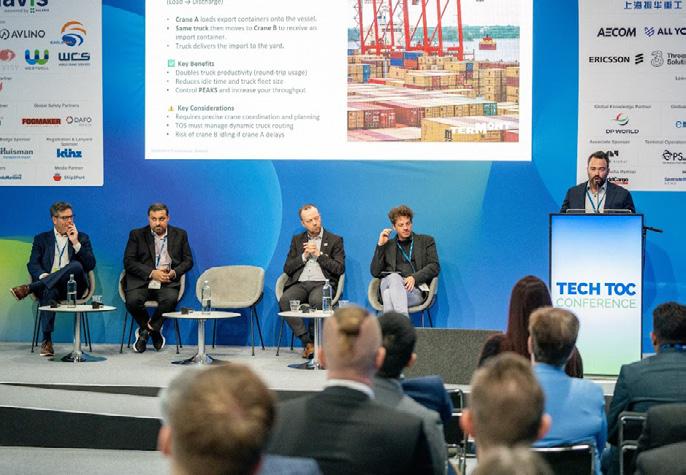
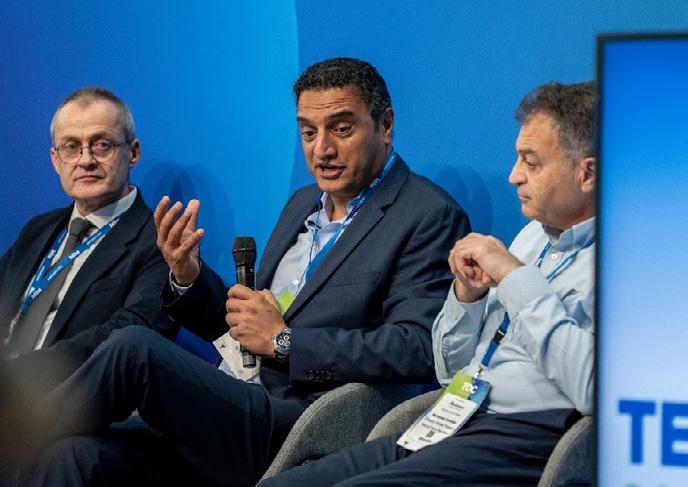

How do you like this year’s edition of TOC Europe?
TOC Europe was a productive and valuable event for Liebherr Maritime Cranes. We had meaningful discussions with both new and long-standing international customers, which led to the signing of a new contract. This outcome highlights the continued trust in our solutions. The event also gave us the opportunity to present innovations in electrification, crane automation and digital support systems, which received strong interest and positive feedback from visitors.
How, from your perspective, does the current market situation look?
We see a stabilising market with growing demand for automation, electrification, and sustainable solutions. Offshore wind projects and terminal upgrades are driving interest in high-capacity, lowemission port equipment solutions. In 2024, Liebherr achieved over €1 billion in maritime crane revenue, supported by strong global demand and key deliveries, including Europe’s first automated dual trolley STS cranes to Hamburg.
What new solutions/products have you presented to your customers this year?
We showcased electric drive innovations, including the fully electric LPS 420 E, along with updates to our container cranes that feature energy recovery and automation technologies. We celebrated 25 years of the Liebherr RTG. Last but not least, our team also introduced the LiSIM move , a portable VR crane simulator that offers flexible, high-quality training in a compact, suitcase-sized format. It is ideal for use at customer sites, events, or classrooms and does not require a permanent installation.

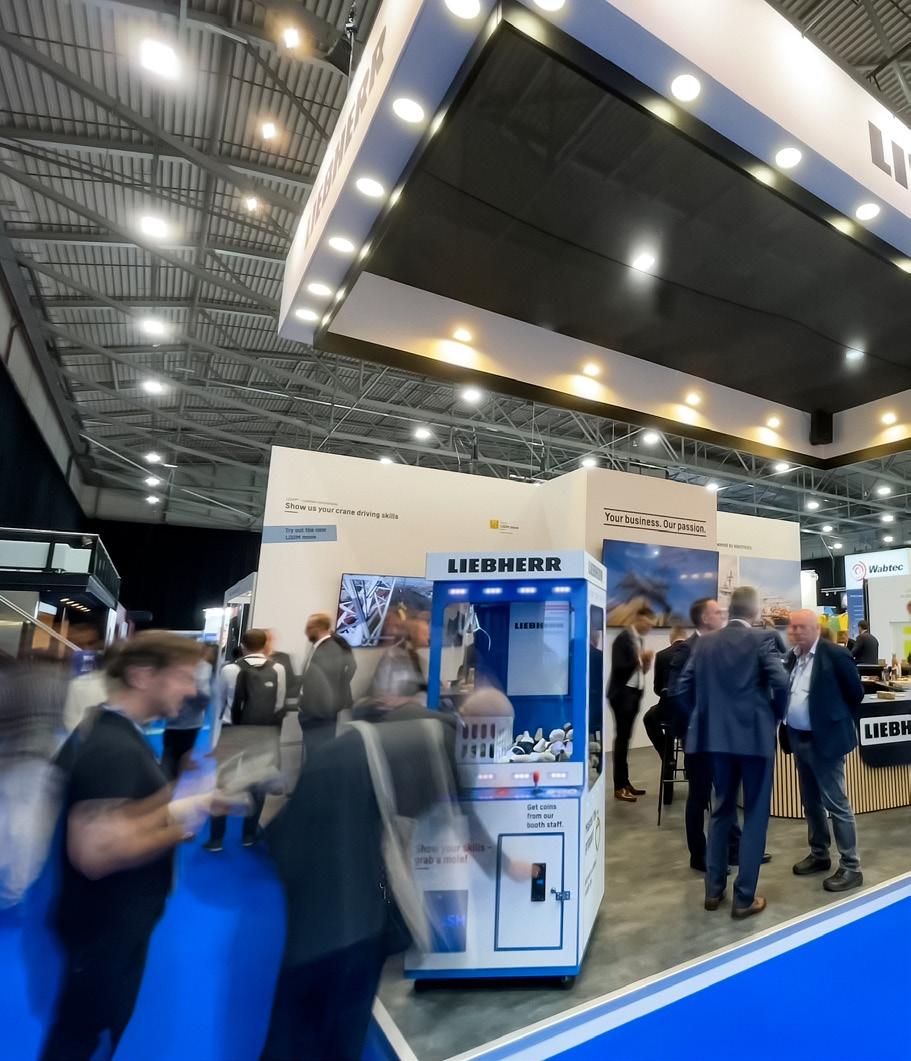

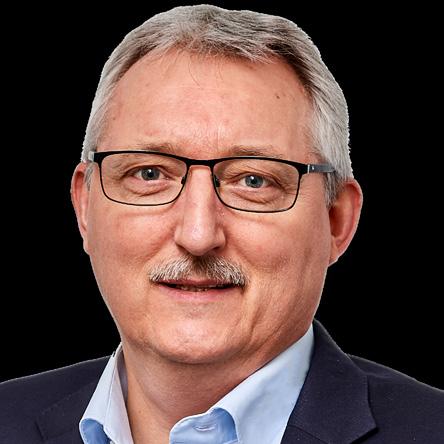
How do you like this year’s edition of TOC Europe?
This year’s TOC Europe was a real success for us. It was our third time exhibiting, and we’ve already secured our spot for 2026. What stood out was how many visitors arrived already familiar with our brand, our technology, and the role we play in the port crane sector. That growing awareness was incredibly rewarding.
How, from your perspective, does the current market situation look?
We see it as a very exciting and fastevolving space. Growth in global trade and ongoing port infrastructure investments are major drivers—but equally important are the industry’s efforts to embrace automation and sustainability. That aligns perfectly with our strengths. Our braking systems are designed to meet those exact

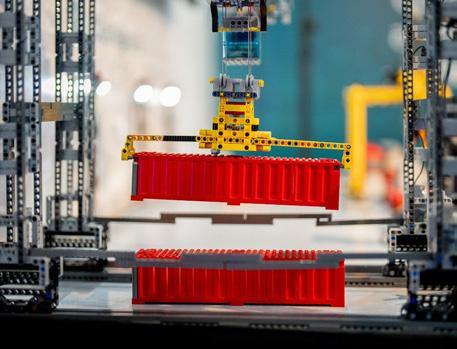


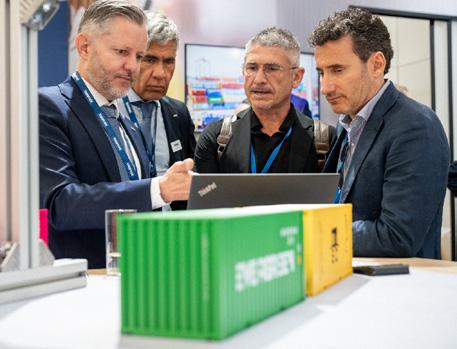

demands—high performance, built-in intelligence, and long-term reliability.
What new solutions/products have you presented to your customers this year?
We showed complete braking packages, as it is not just about components—it’s about delivering integrated systems that reduce complexity and enhance reliability. Our technology is already trusted in demanding sectors like mining and wind, so customers know it’s built for tough environments and mission-critical uptime.
We gave customers a close-up look at braking and powertrain components engineered for ship-to-shore, gantry, and mobile container cranes. But beyond that, we demonstrated what a unified system really means—brakes, couplings, gearing, and full support that work together from day one. That’s the message we wanted to bring to TOC, and the response was fantastic.
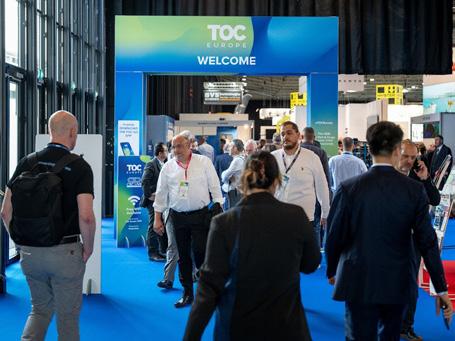
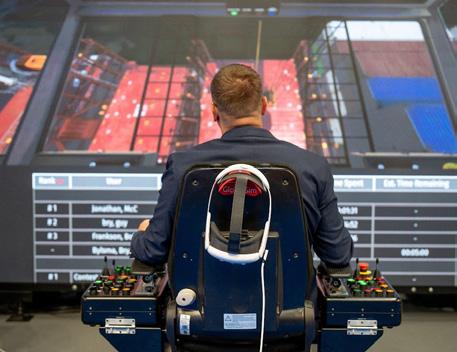


How do you like this year’s edition of TOC Europe?
This year's TOC Europe seemed to have a quieter start at the Ahoy than the previous years, but the second day was busy, with many high-quality discussions, meetings and activities at our stand. Our customer evening was also a great success with many of our customers and partners joining us. Overall, TOC Europe is an important platform for us to showcase our latest solutions and to connect with our existing and potential customers and partners.
What new solutions/products have you presented to your customers this year?
Kalmar announced the launch of Inspector, a digital inspection application to streamline routine inspections of material-handling equipment. Inspector, part of the MyKalmar ecosystem, makes equipment inspections more efficient and allows inspection data to be stored centrally for analysis and reporting purposes. The application is available as both a standalone mobile app and as an optional module for customers with a valid MyKalmar INSIGHT subscription. Kalmar also showcased its electric portfolio, including electric straddle carrier, electric heavy forklift, electric terminal tractor, electric reachstacker, electric empty container handler and the new Gen 2 Li-Ion battery solution.
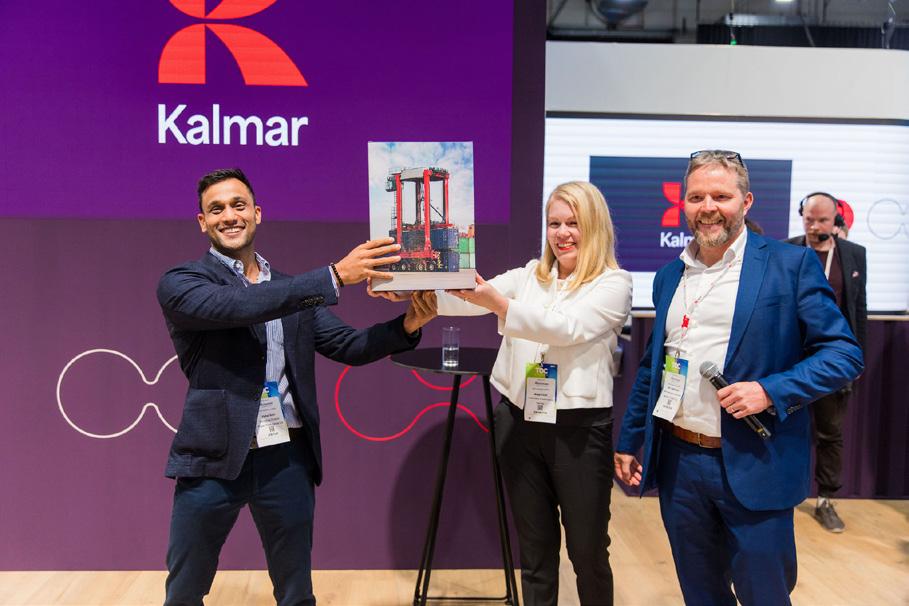
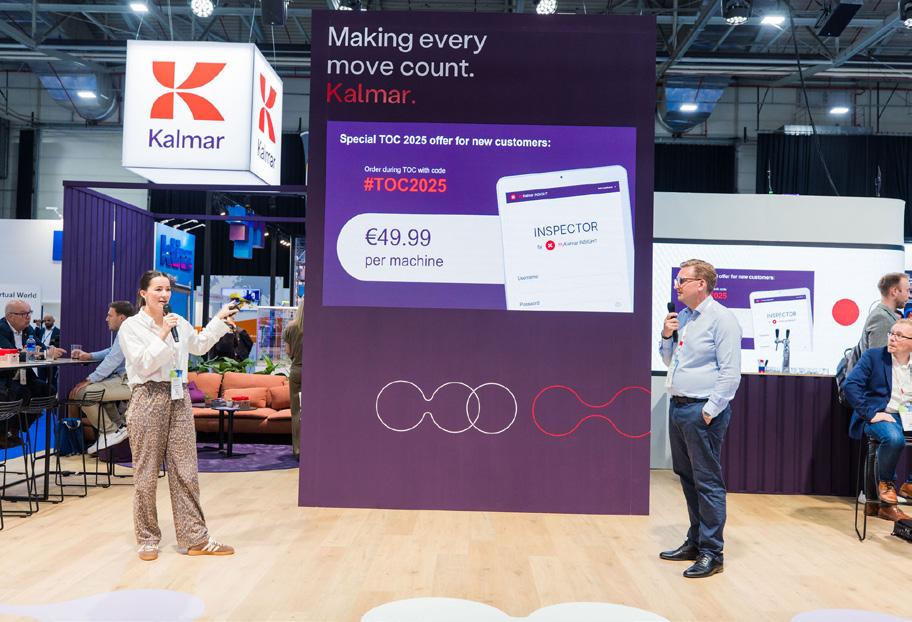


RAMA RAJU CEO
ENTERPRISE SOLUTIONS
How do you like this year’s edition of TOC Europe?
Envision Enterprise Solutions is a global technology leader transforming midsized container terminals through intelligent, purpose-built TOS platforms. Focused on terminals handling under 1 million TEUs annually, Envision delivers scalable, automation-ready solutions that streamline operations, increase throughput, and reduce complexity. This year’s TOC Europe was a landmark event for us. As the exclusive Global Technology Partner for all four TOC events in 2025, our presence carried special weight. The Tech TOC sessions stood out—sparking meaningful dialogue, sharing forward-thinking ideas, and reinforcing our belief in collaboration as the engine of innovation.
How, from your perspective, does the current market situation look?
The market is entering a period of transformative growth. With global port operators advancing their digital strategies, the time is ripe for independent and mid-sized terminals to follow suit. Shifting trade routes and evolving global dynamics offer a rare opportunity to reset, rebuild, and reimagine port operations. Those who embrace tech-driven agility and resilience will lead the way forward.
What new solutions/products have you presented to your customers this year?
At TOC Europe, we unveiled our upgraded Container Terminal Operating System V4 – a tailored, quick-to-deploy solution built specifically for mid-sized terminals. It enables a smooth transition toward smart terminal operations – cost-effectively, incrementally, and without disruption.
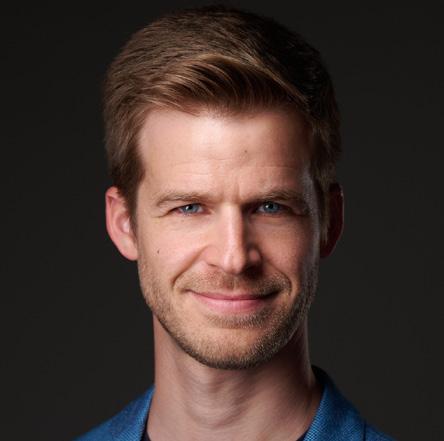
PETER SZELEI Senior Director Business Development FERNRIDE
How did you like this year's edition of TOC Europe?
TOC Europe 2025 truly showed the industry's drive forward. Automation, safer and more productive work, and quality job creation were key themes. We welcome this shift, aligning perfectly with FERNRIDE's mission. AI took centre stage at Tech TOC, highlighting how operators can boost output. It was excellent to meet decision-makers, understand needs, and show how we accelerate progress. More events like this, with expert insights, are vital to collectively modernise global logistics.
How, from your perspective, does the current market situation look?
Global disruptions like U.S. tariff uncertainty, the Red Sea crisis and the shipping alliance realignment keep terminals under pressure to react, shifting focus to daily fixes over long-term planning and improvements. This will change eventually. Those who future-proof today will gain a competitive edge when the global scene settles. The autonomous terminal tractor (ATT) market is maturing fast. Certification and industrialisation are advancing, the benefits of scale are clear, and the push to stay competitive is real. Modernising now helps operators keep their edge as automation and AI reshape terminals.
What new solutions/products have you presented to your customers this year?
At TOC Europe, we showed how our ATT system is now fully integrated and ready for daily operations. We shared new features enhancing productivity, simplifying fleet operations, and fitting real terminal needs. Our customershaped roadmap proves this system can scale, meet strict safety standards, and deliver real impact. We build a proven, industrialised solution that works today and grows with our customers tomorrow.

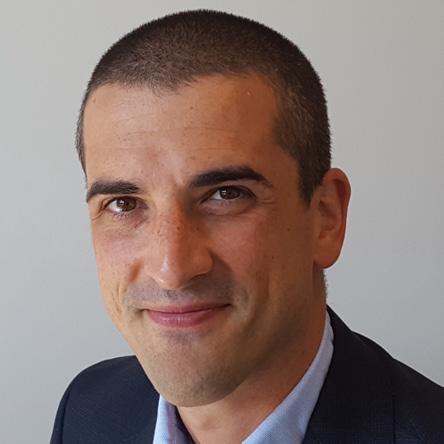
How do you like this year's edition of TOC Europe?
This year's edition of TOC Europe has been exceptionally positive for TRATOS. As a long-standing participant, we value this event not only as an opportunity to present our latest innovations and successful case studies but also as a platform to engage with our clients and industry partners in a more personal and relaxed setting. It's our way of showing appreciation for their continued trust in TRATOS as a preferred cable supplier for port applications.
We've had the pleasure of welcoming representatives from leading terminals and port operators across the globe—from London and Rotterdam to Algeciras, Los Angeles, Dubai, Malaysia, and China. The event also allowed for productive exchanges with key OEMs from Europe, the US, and China, reinforcing the importance of collaboration in driving industry progress.
How, from your perspective, does the current market situation look?
The port sector remains closely tied to global trade dynamics, and we are currently seeing ambitious expansion plans in several regions, many of which are much needed. At the same time, the sector is navigating a complex international context marked by geopolitical uncertainty and evolving trade regulations.
We are observing market developments with cautious optimism. Should the external environment prove conducive, we anticipate continued investment in greenfield projects, as well as in key areas such as automation and decarbonisation, both of which are essential for the sustainable growth of the industry.
What new solutions/products have you presented to your customers this year?
At TOC Europe, TRATOS presented its newly developed reflective and fluorescent cables, now installed at various ports and terminals. These cables enhance visibility in operational areas, significantly contributing to on-site safety while retaining the exceptional mechanical performance that defines our TRATOSFLEX range—engineered for high-speed, automated crane systems and demanding port environments.
In addition, we introduced a new portfolio of marine-certified shore power cables, backed by the latest class approvals. These solutions reflect our commitment to supporting the maritime sector's transition to cleaner, more efficient energy sources.
